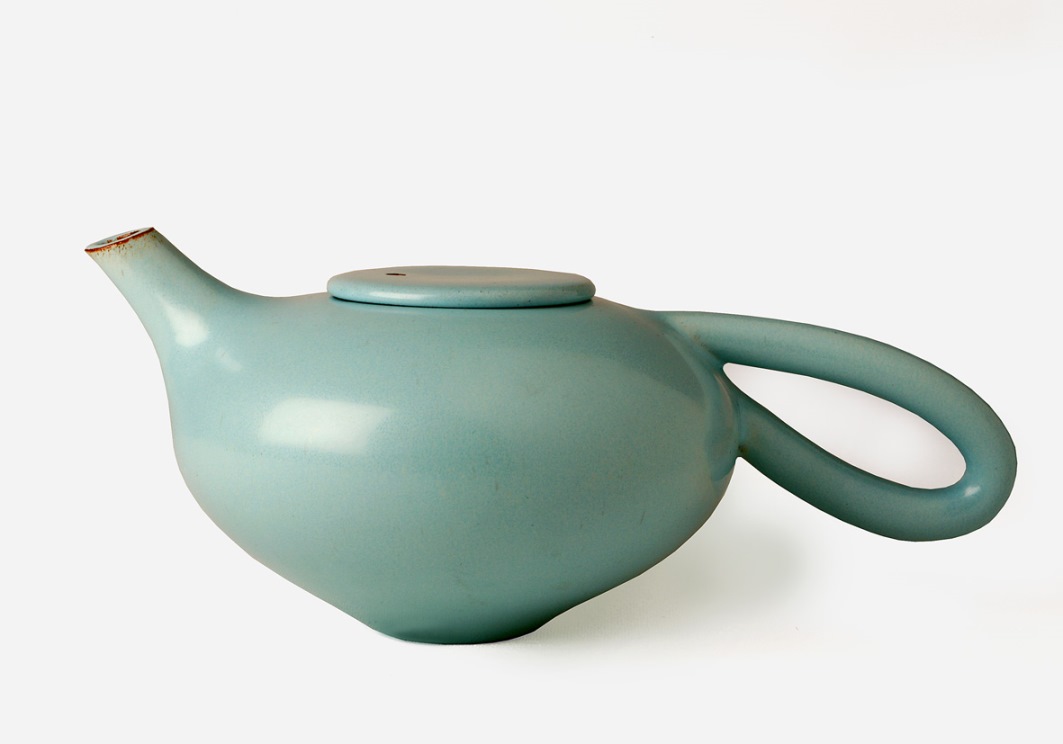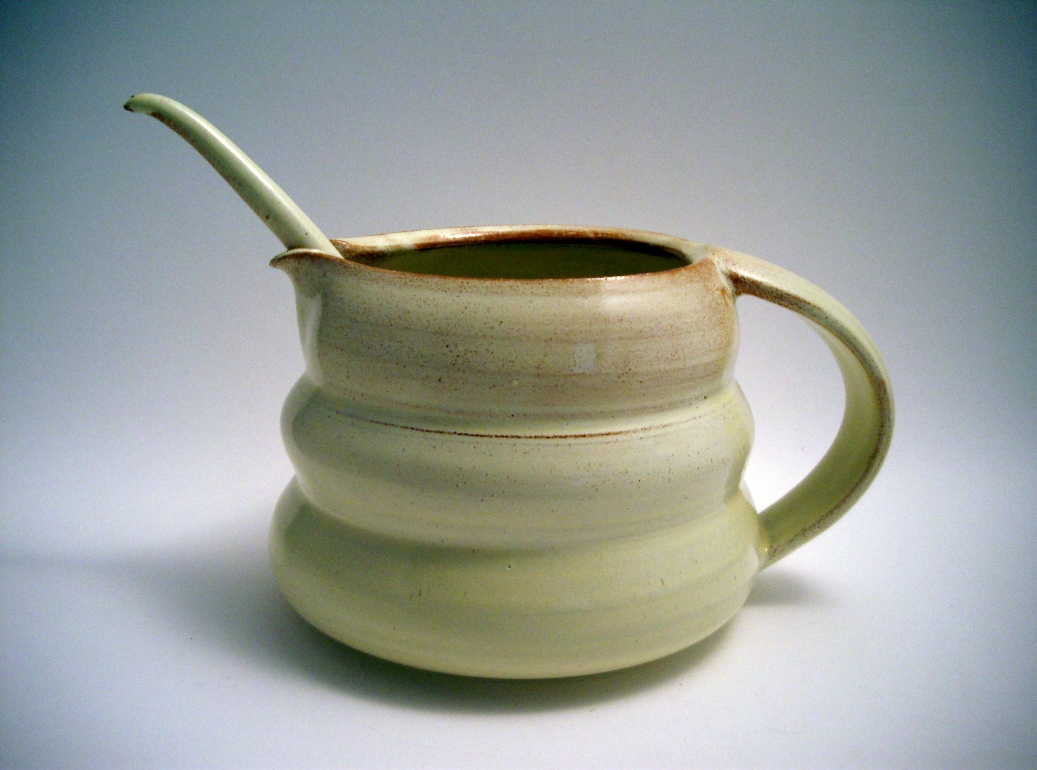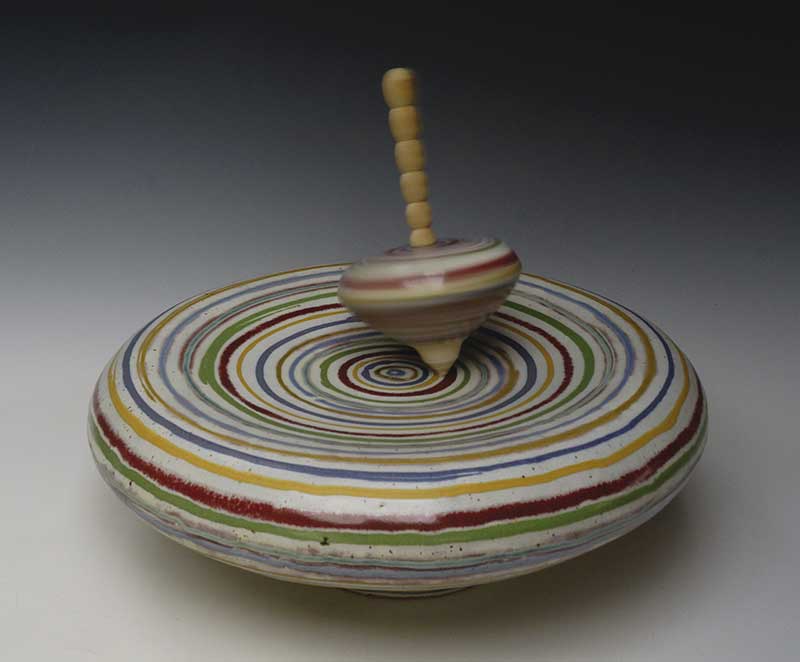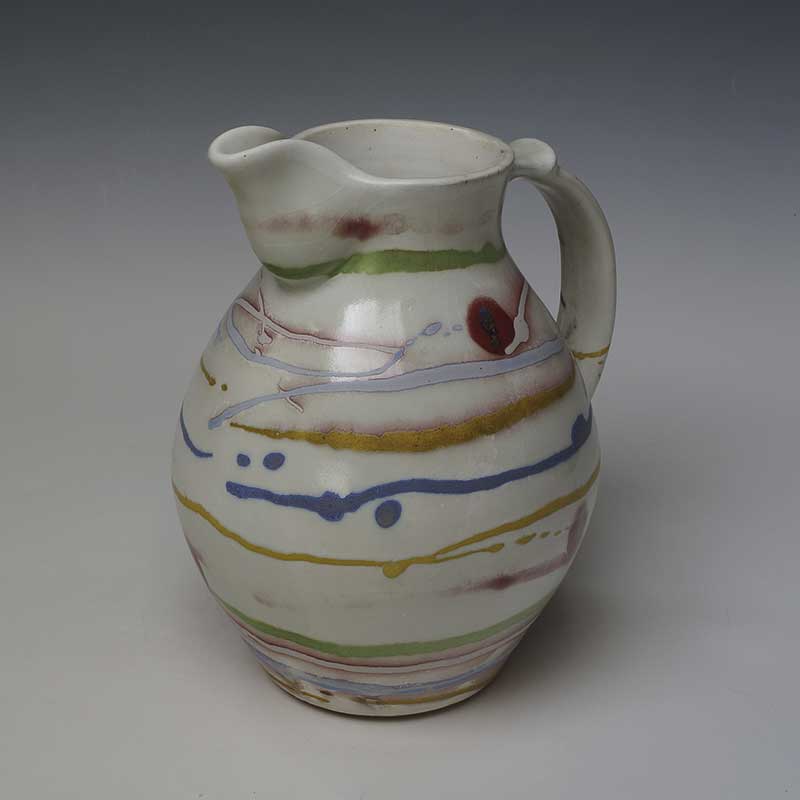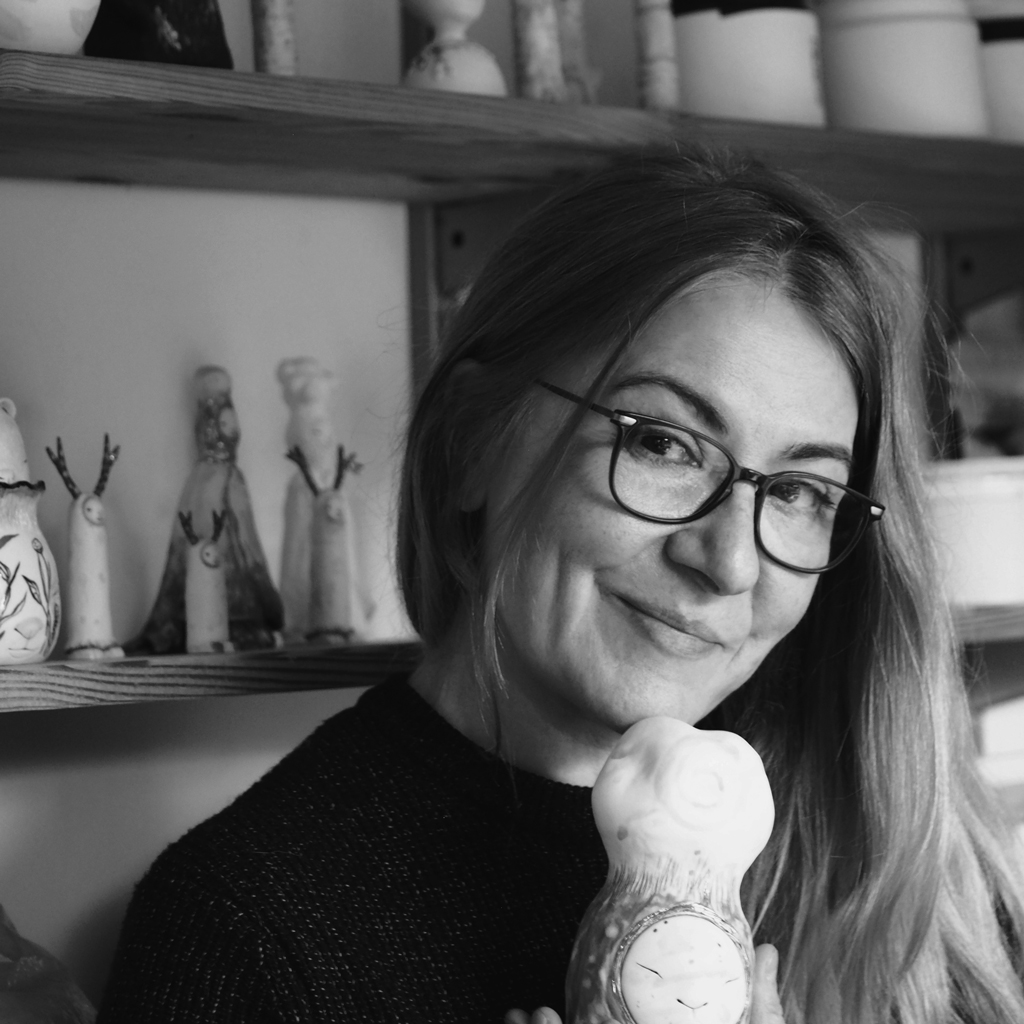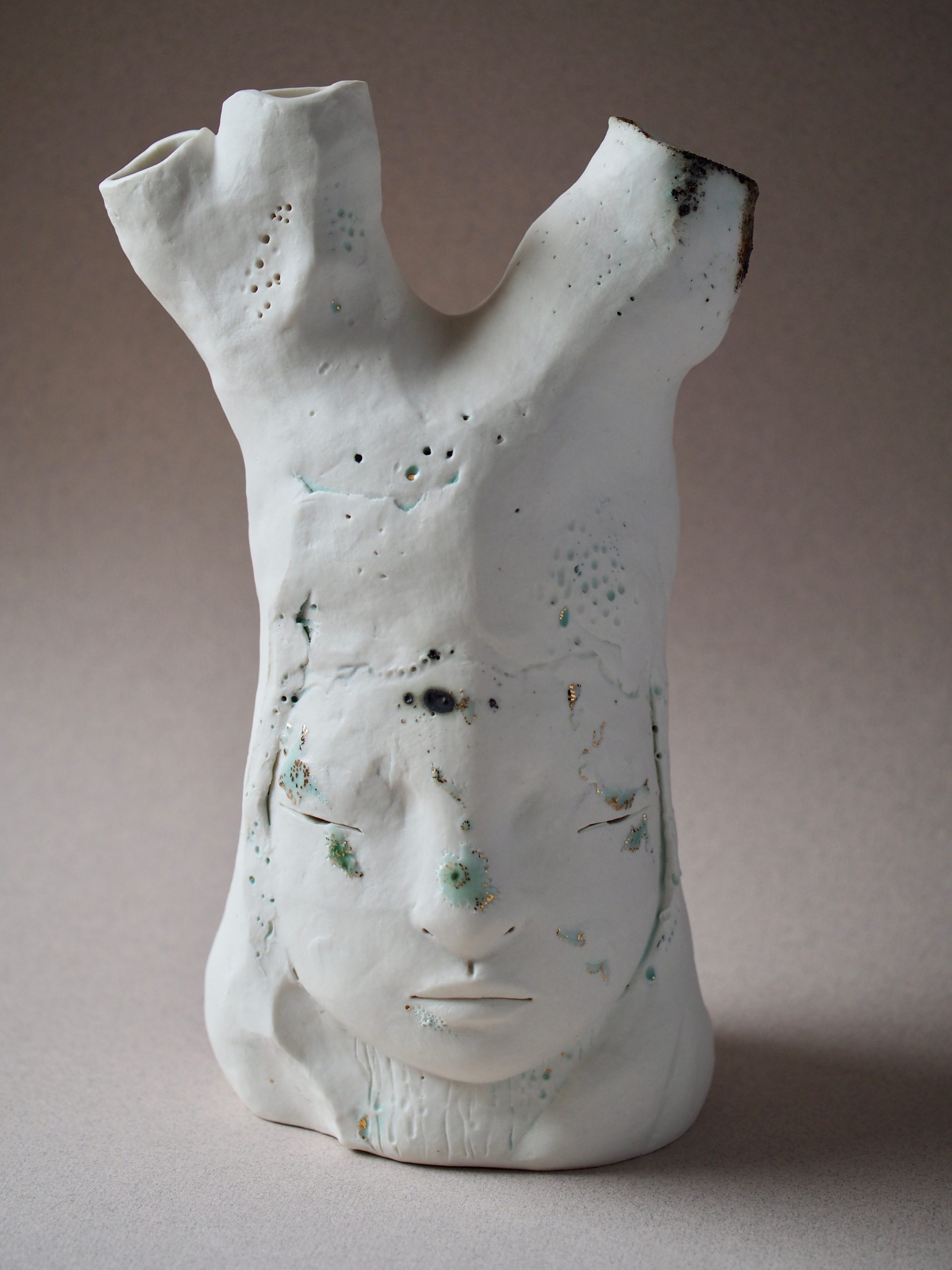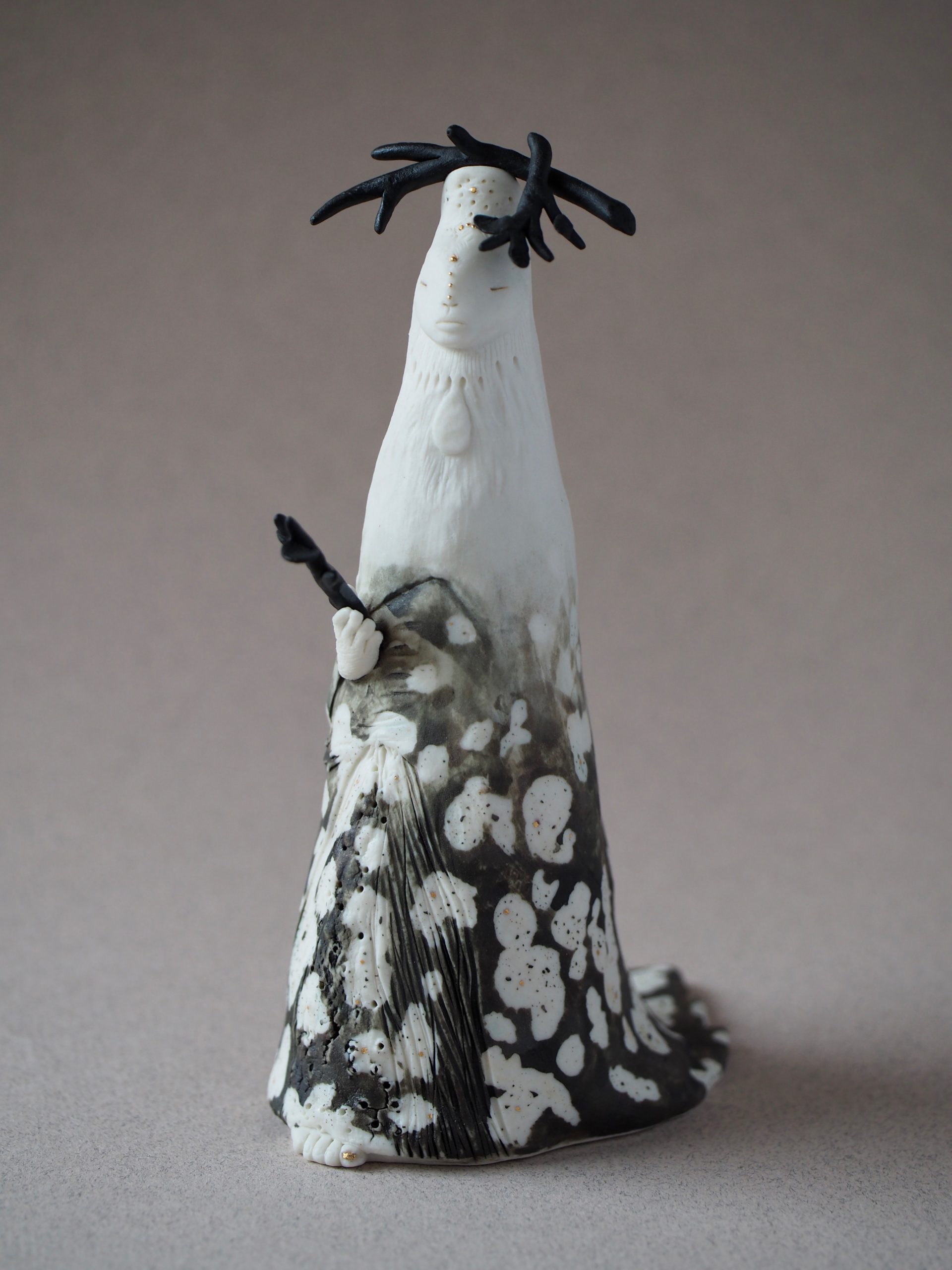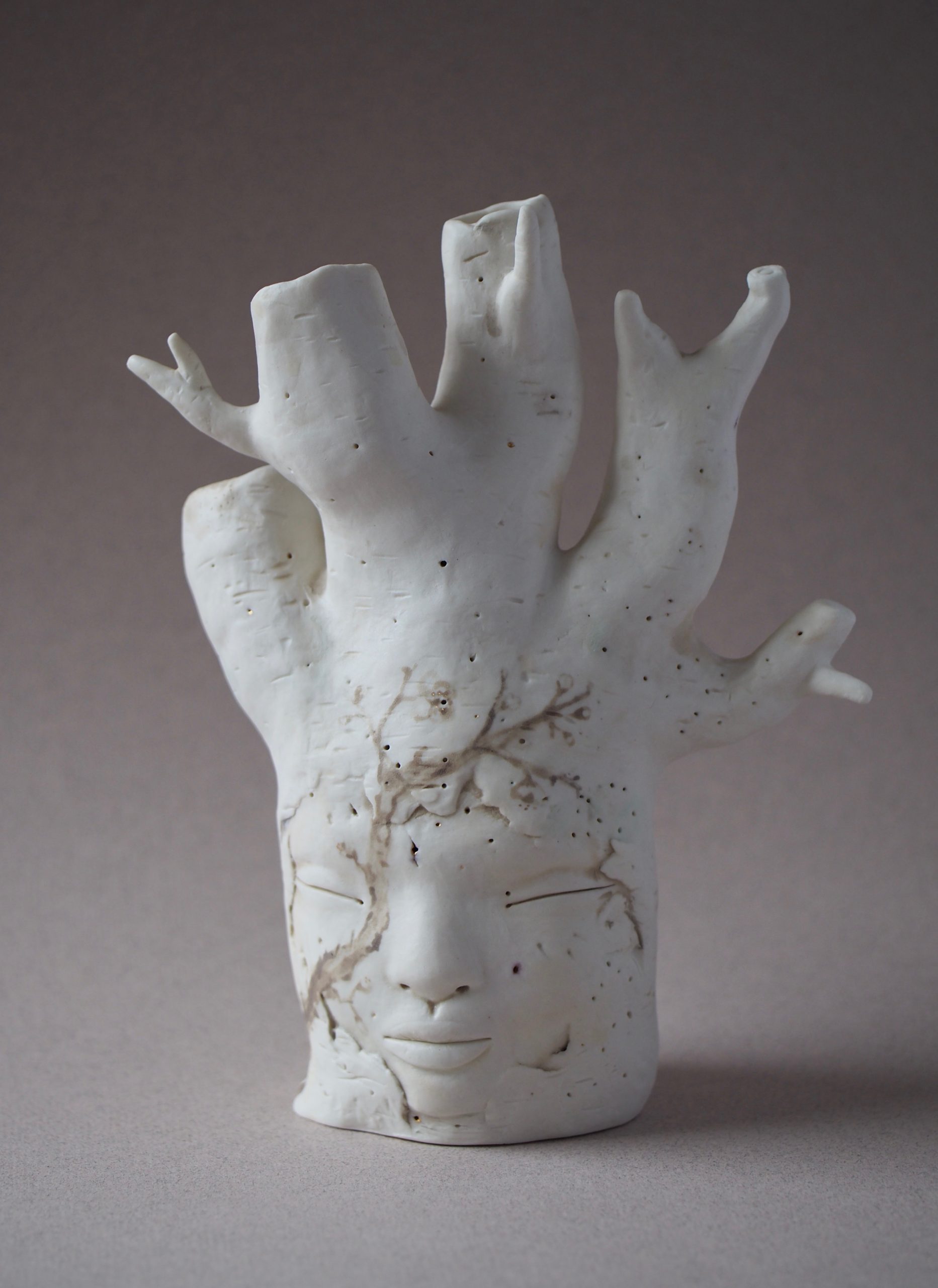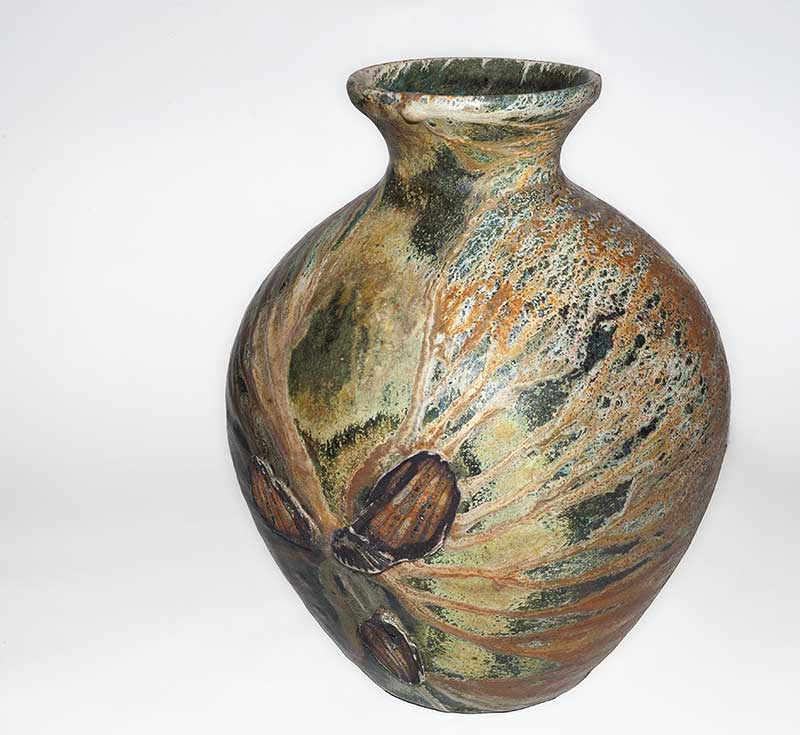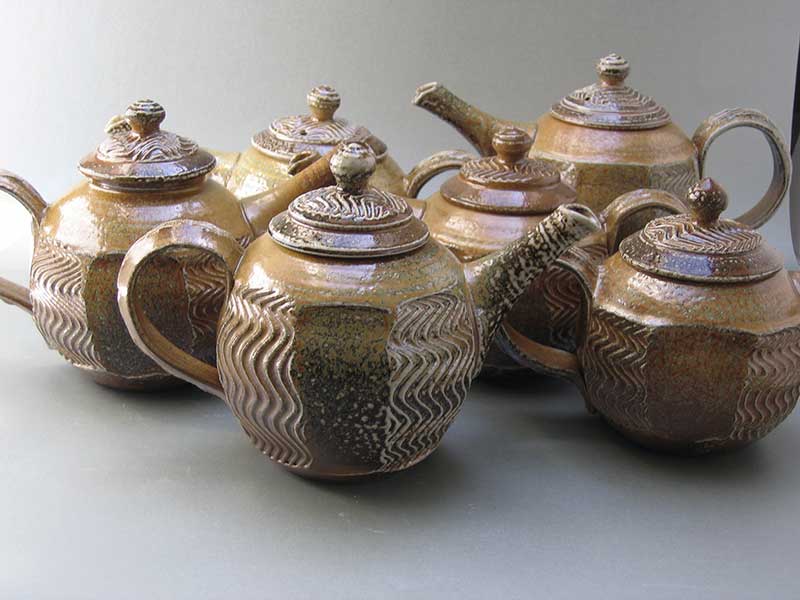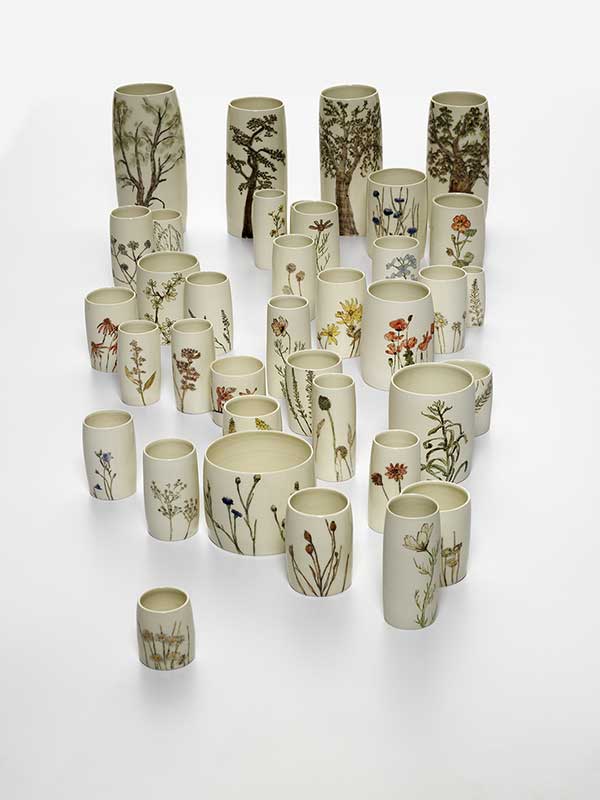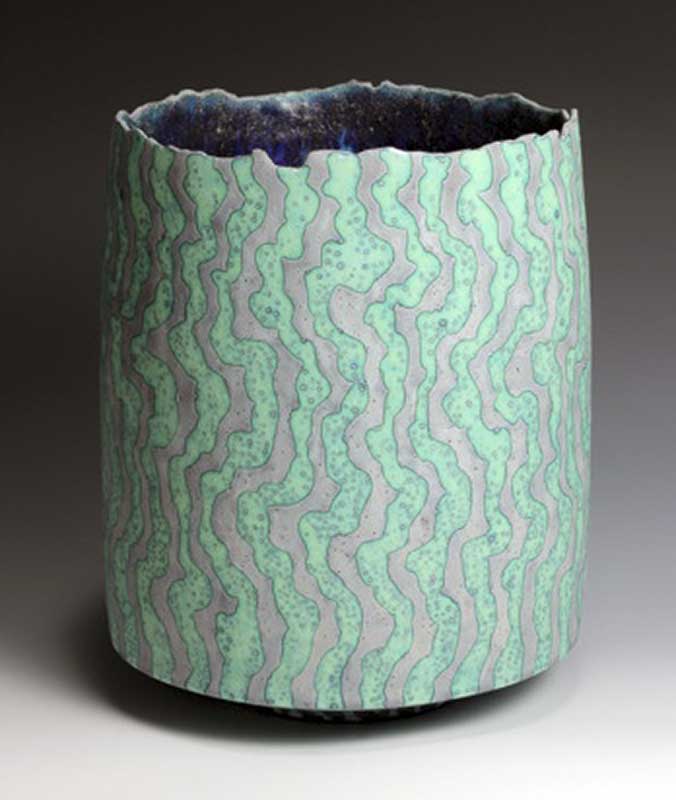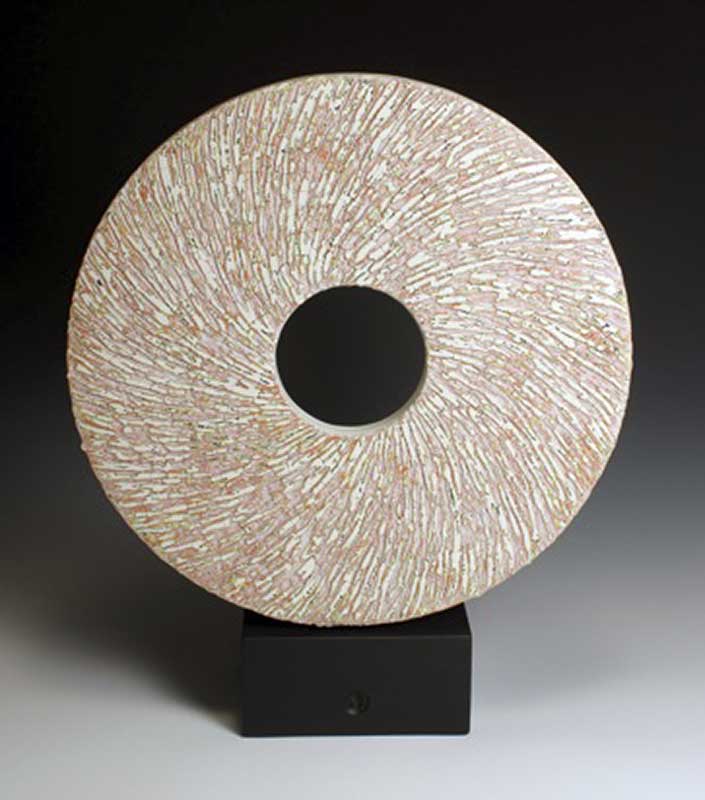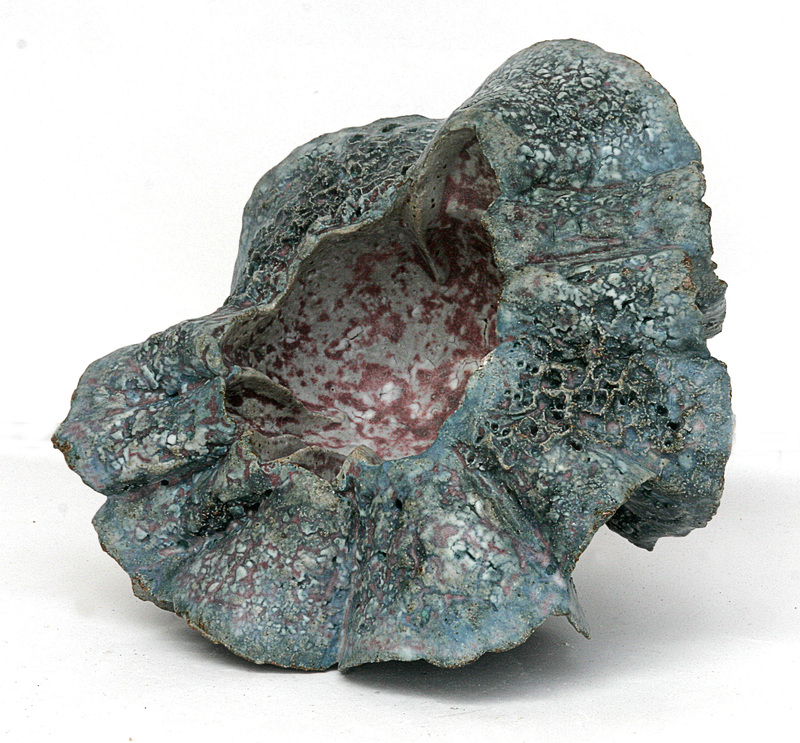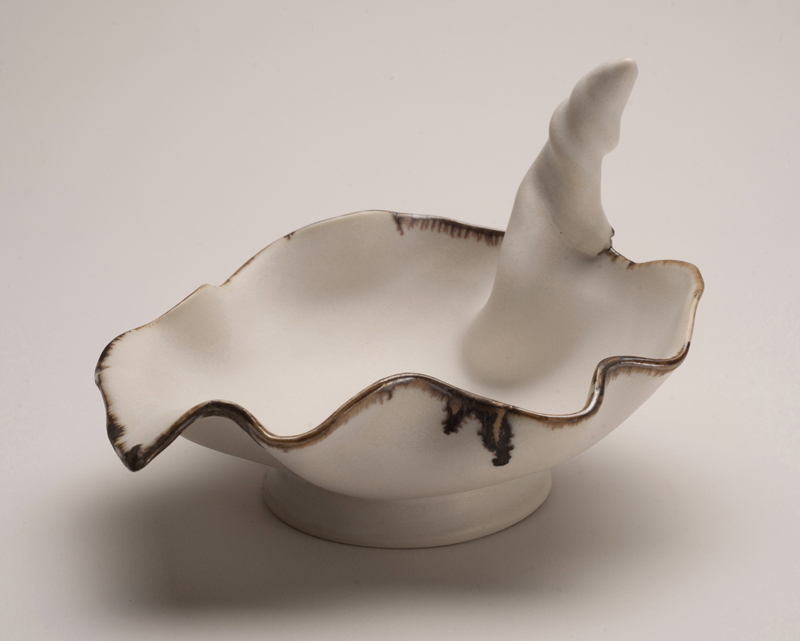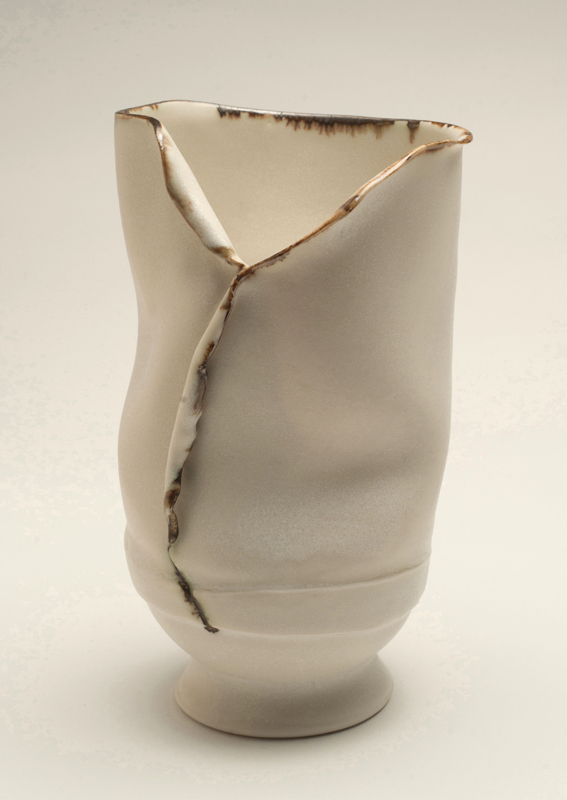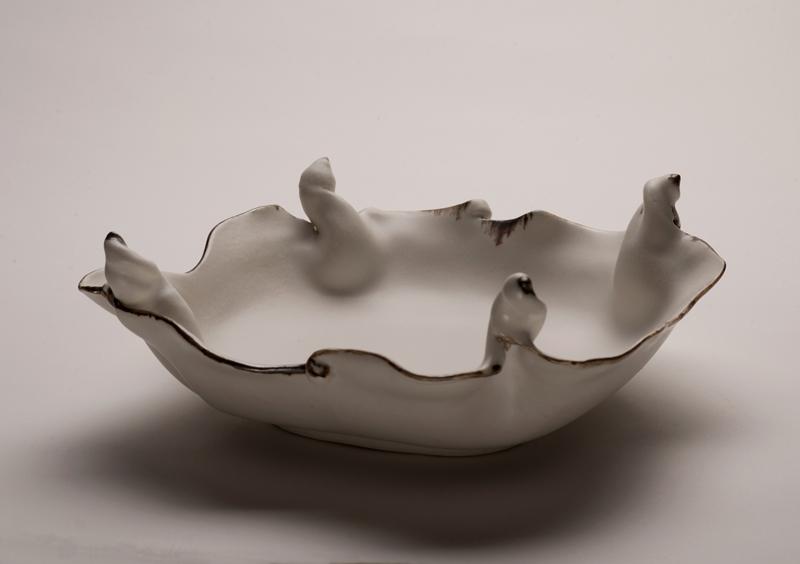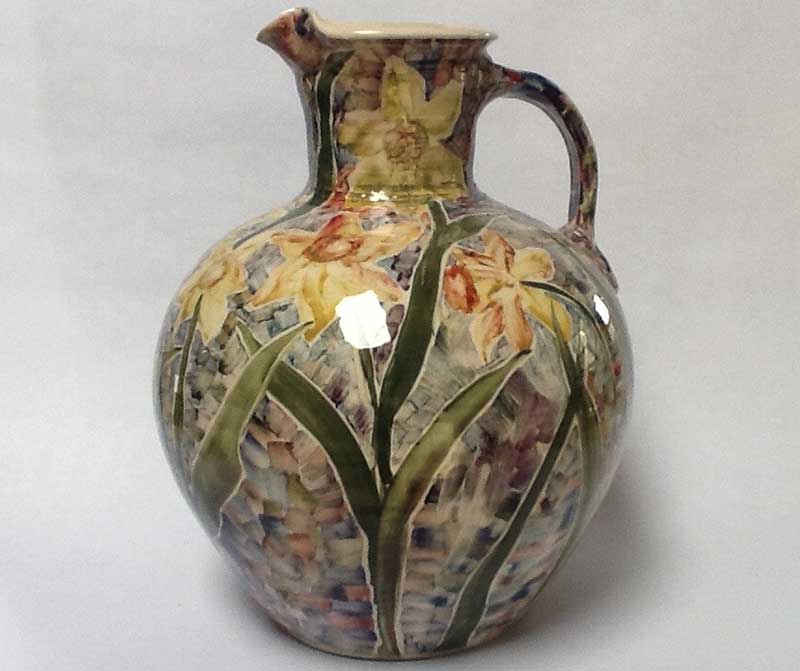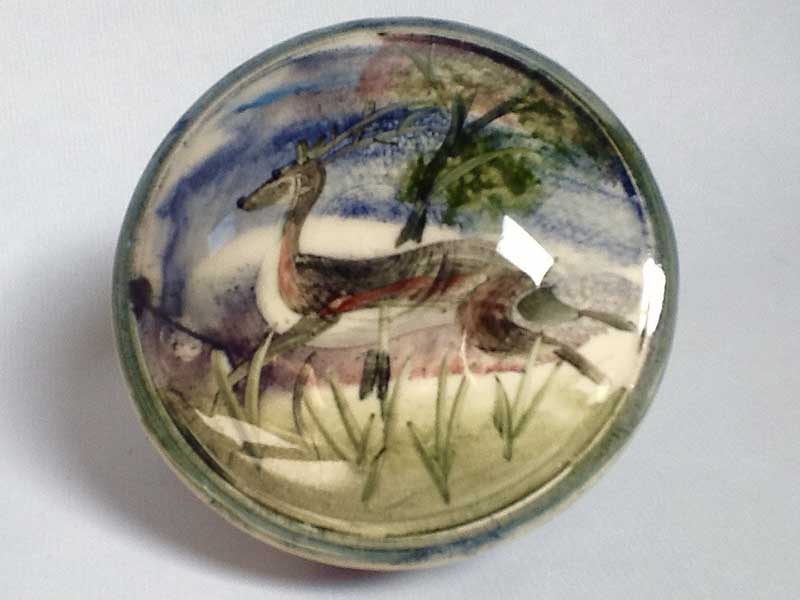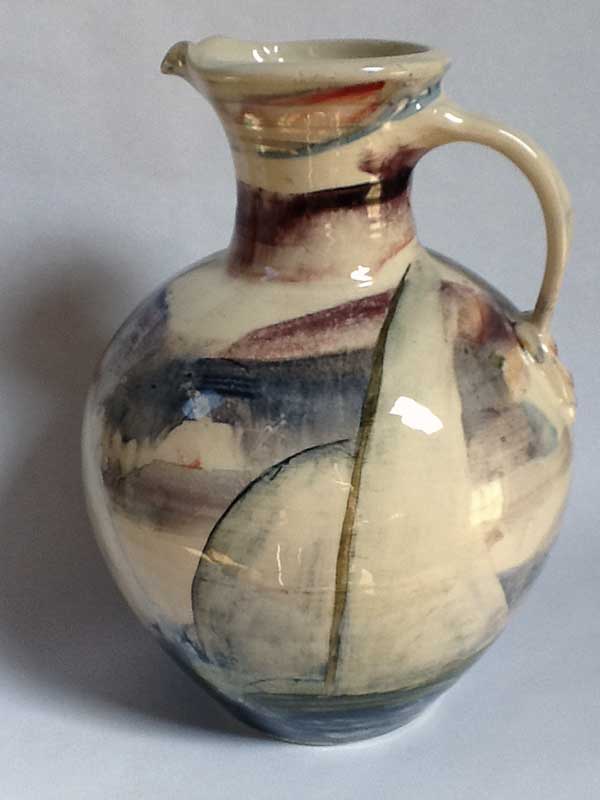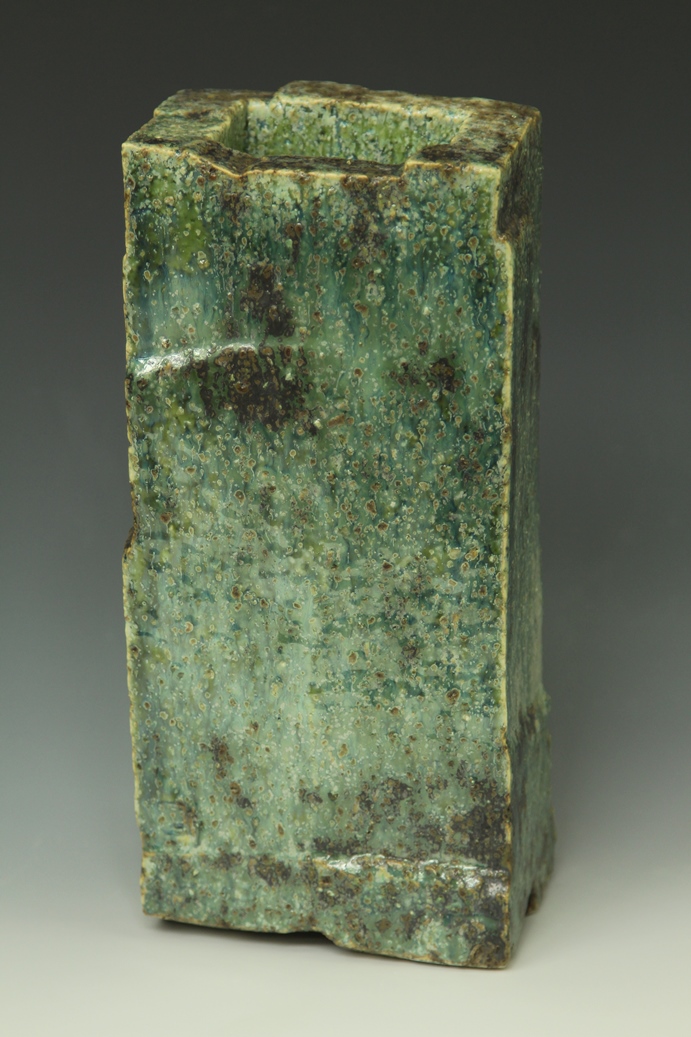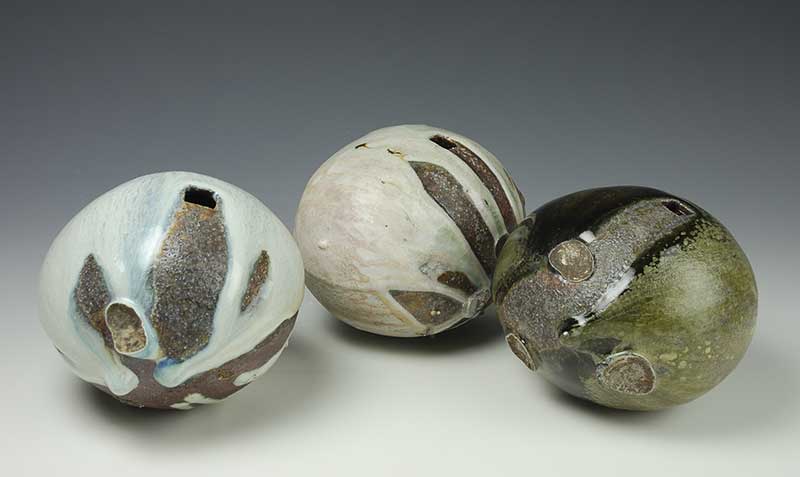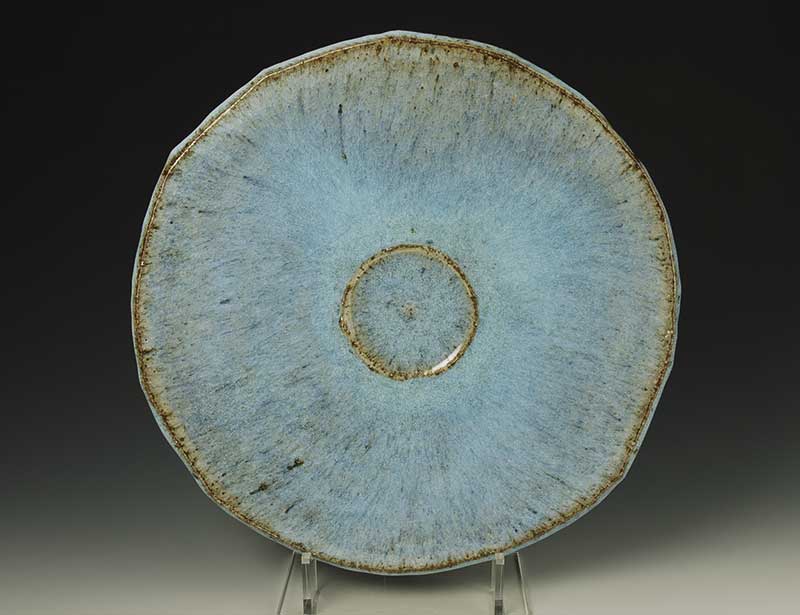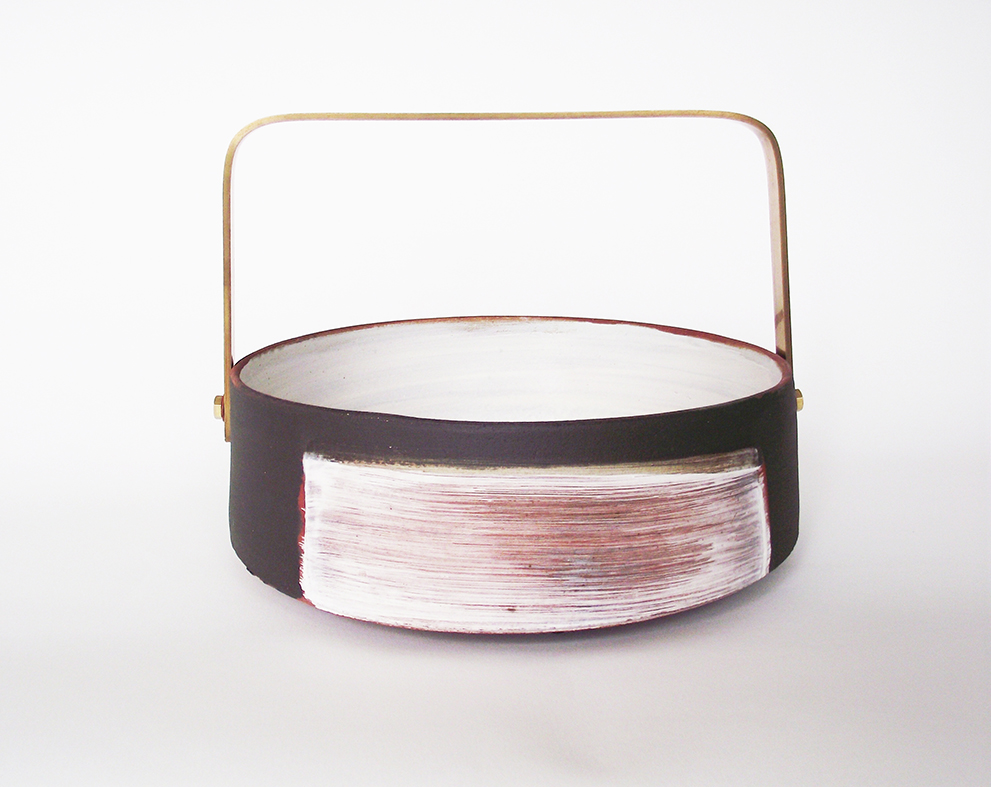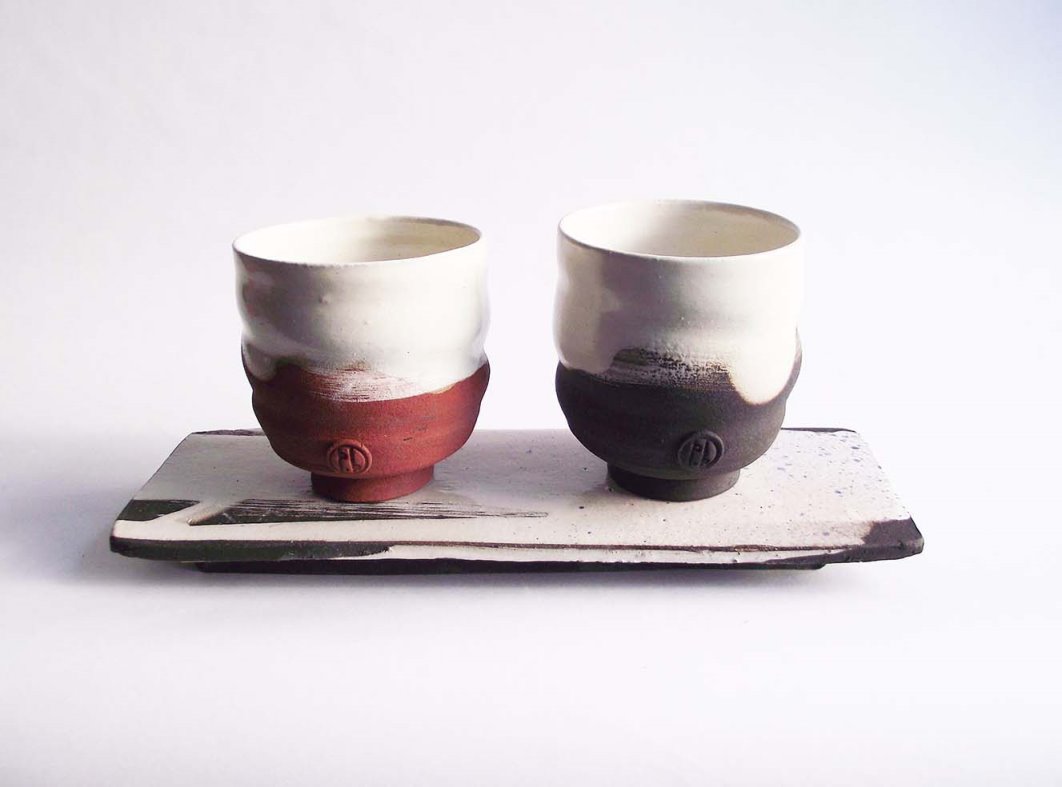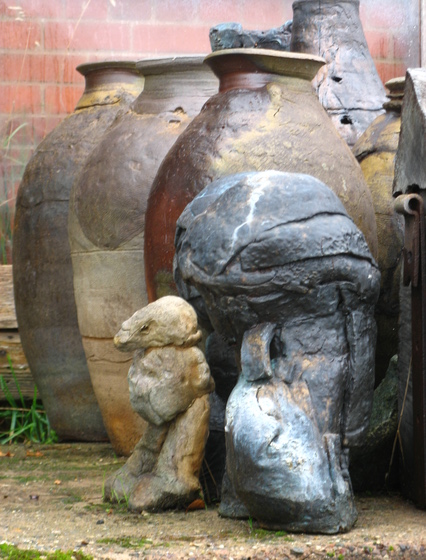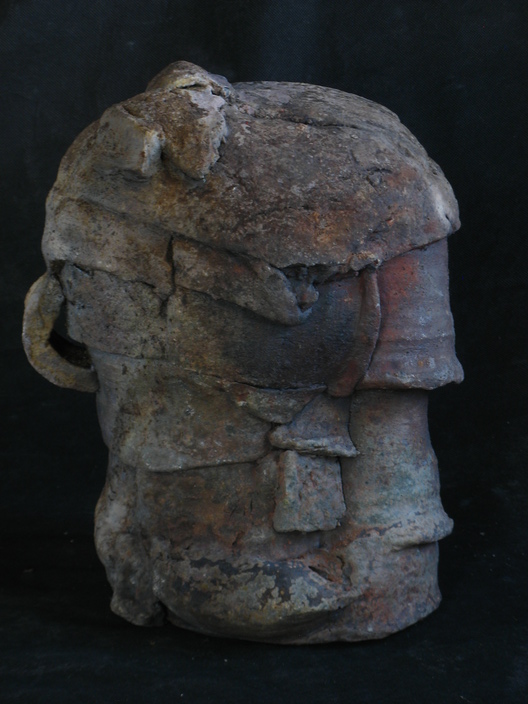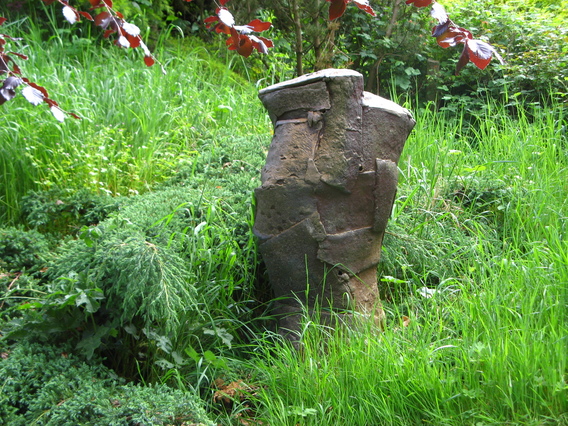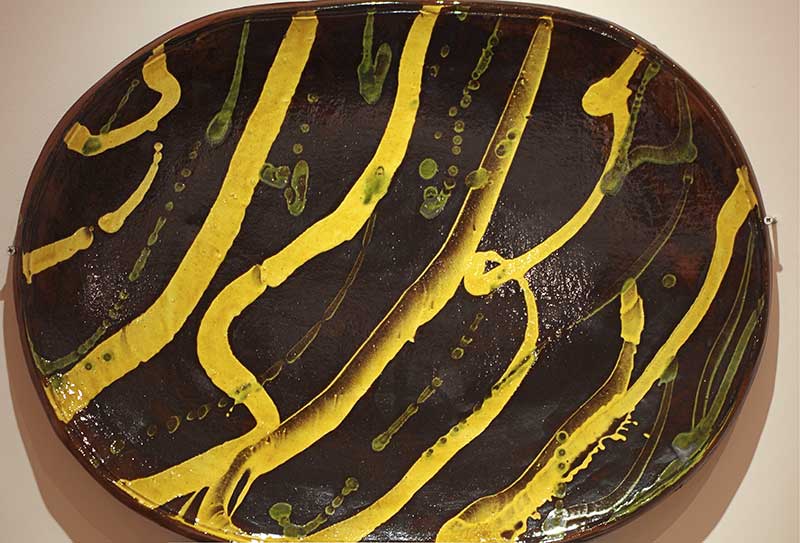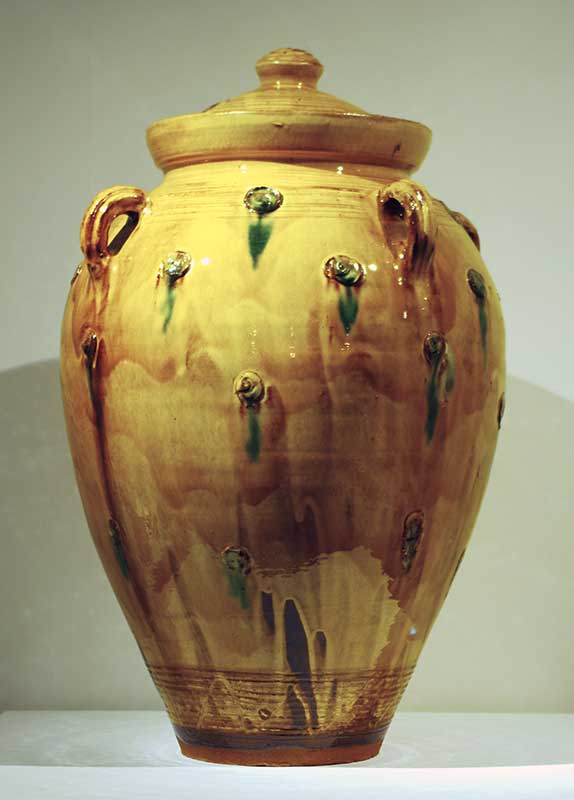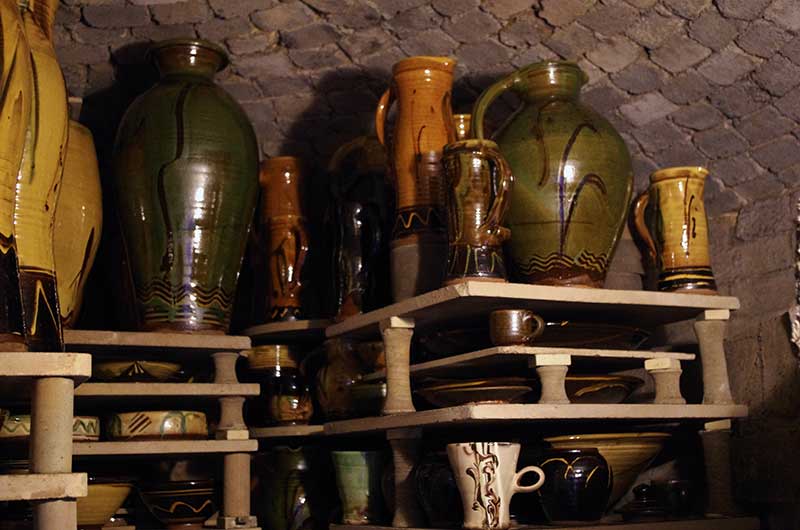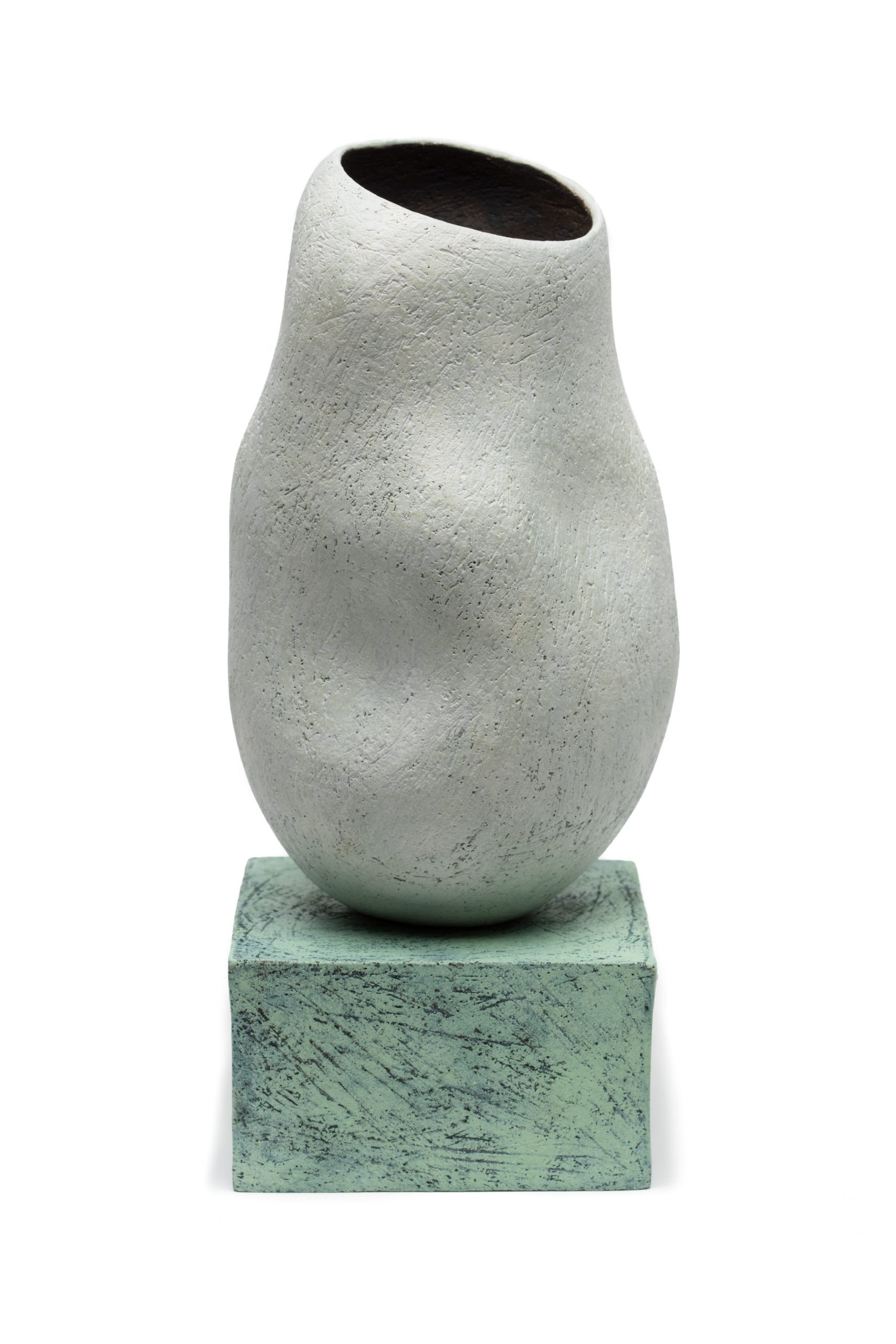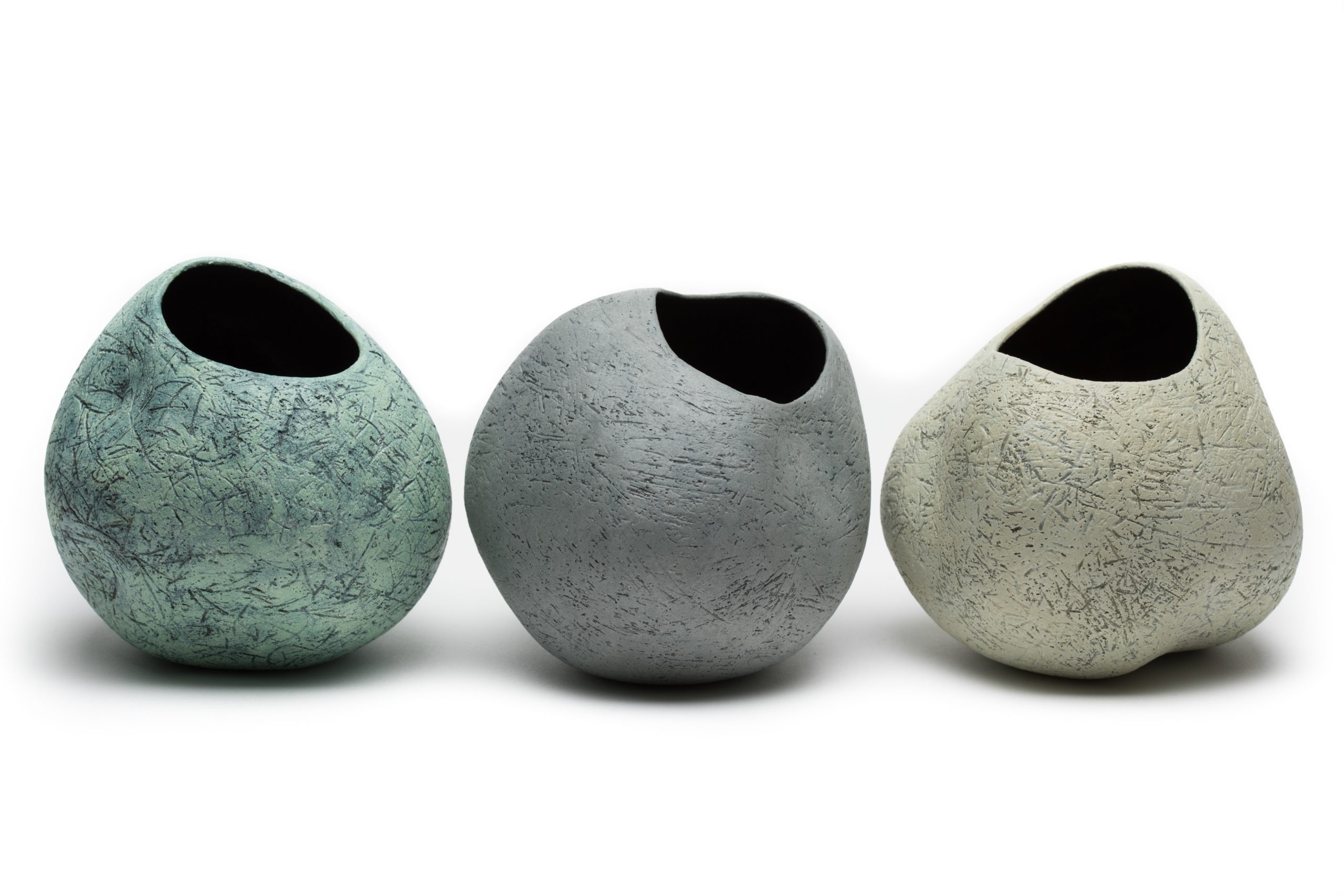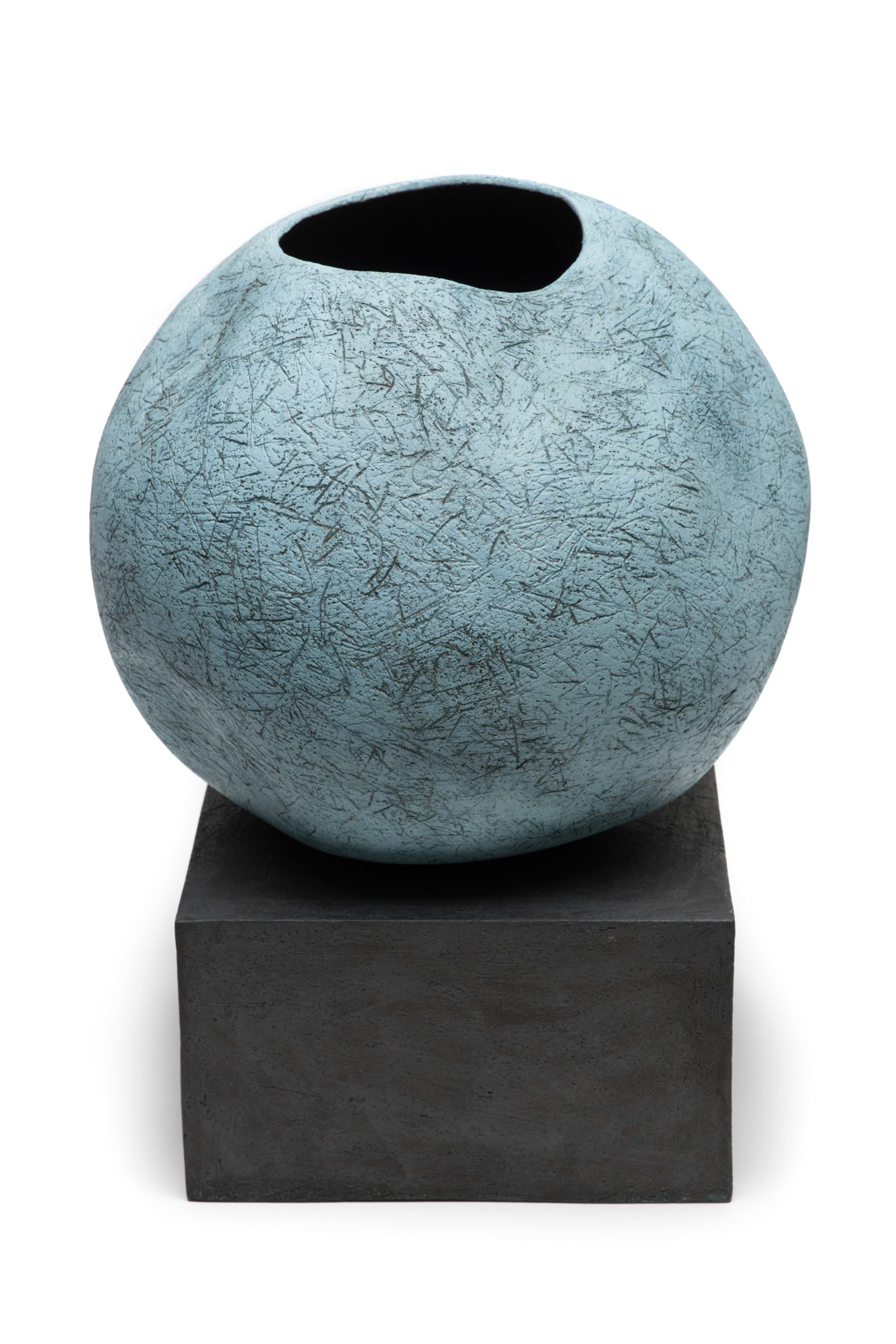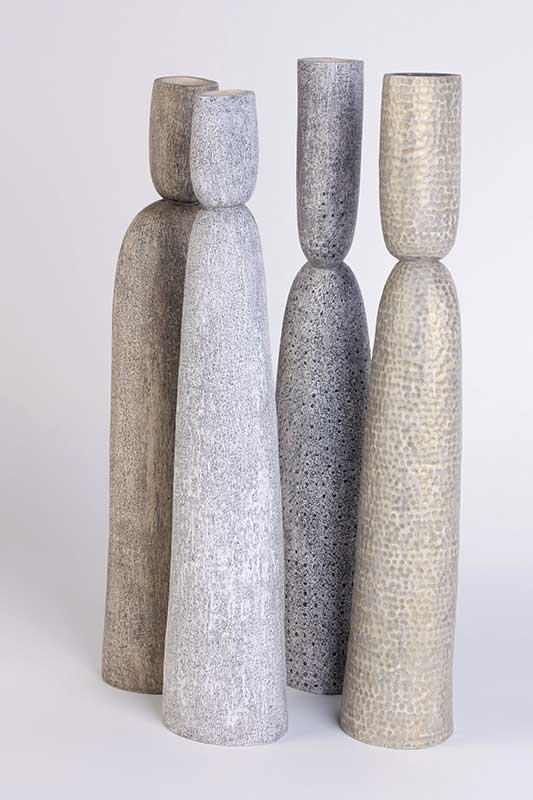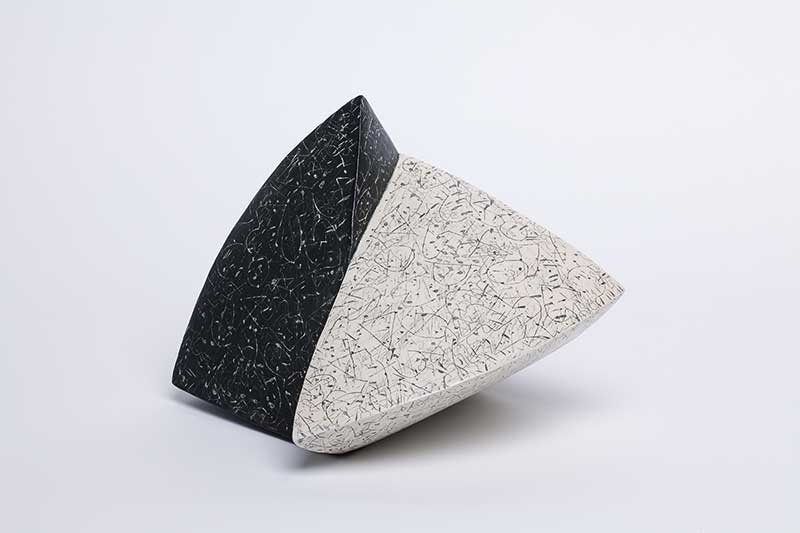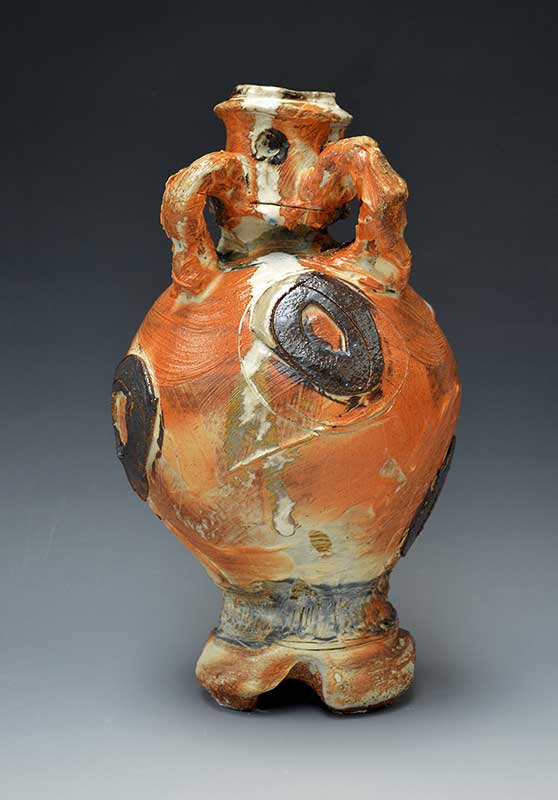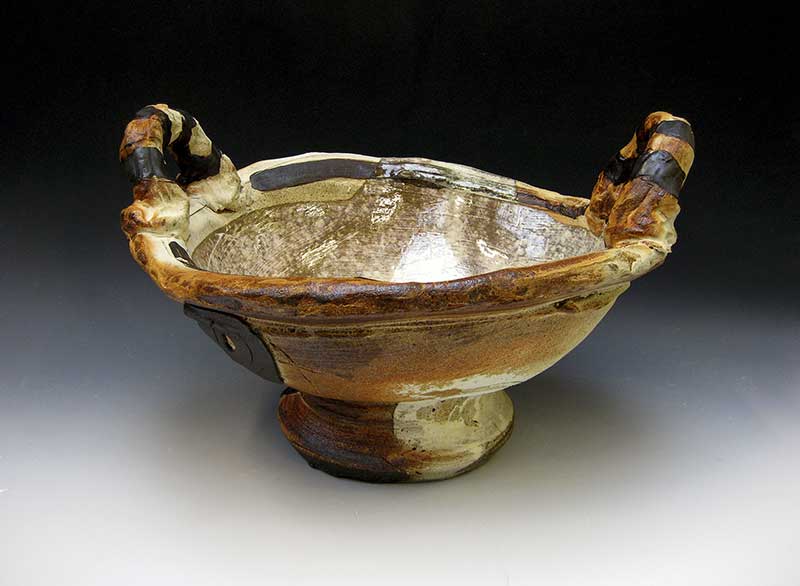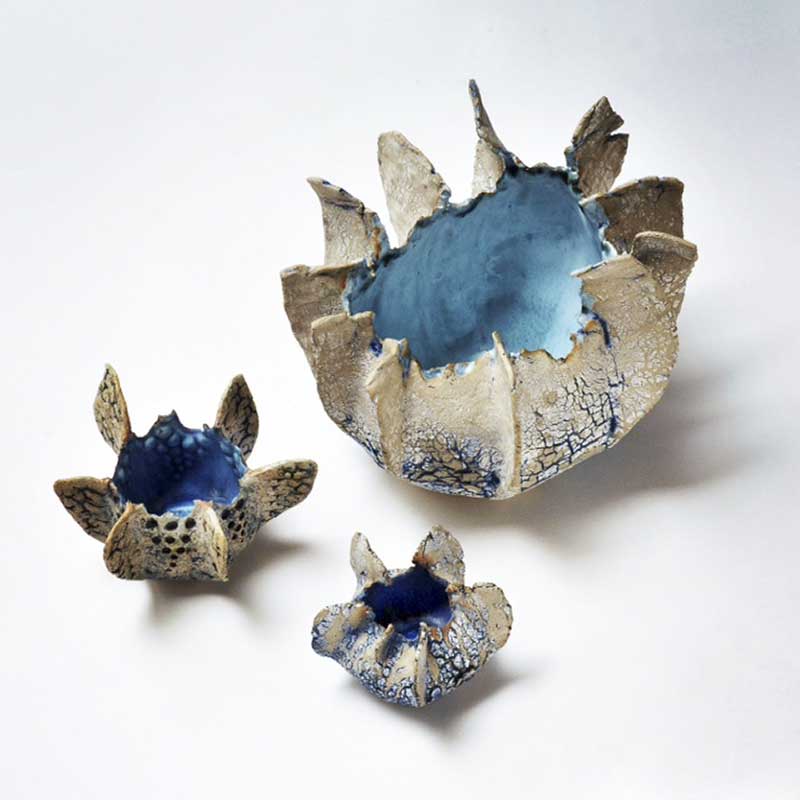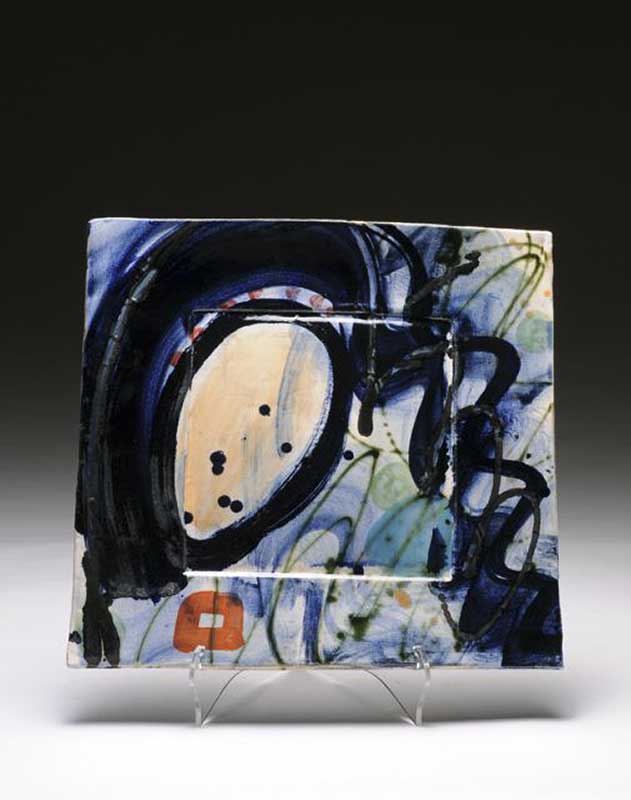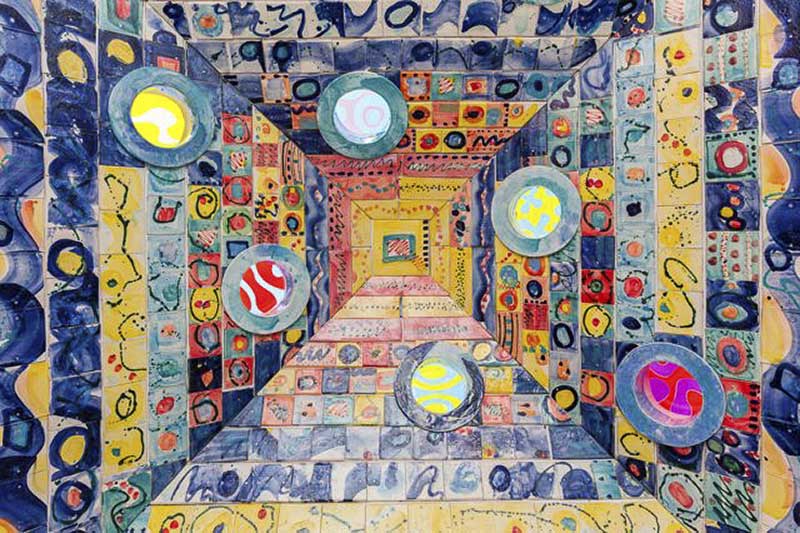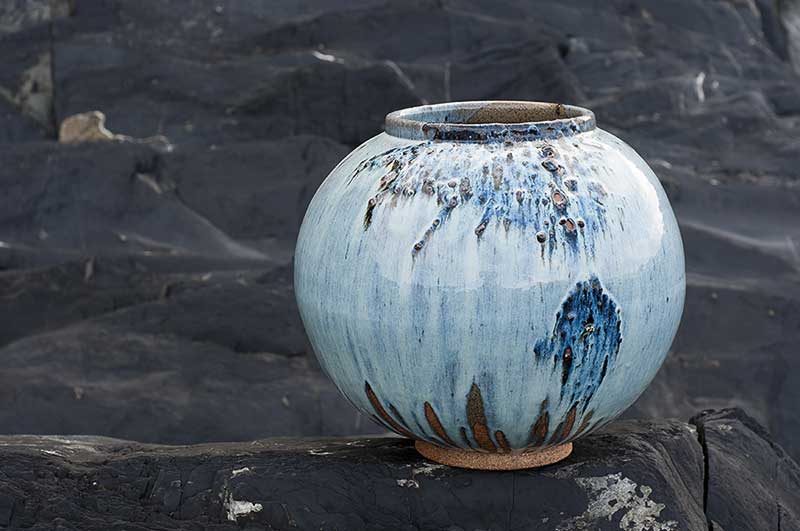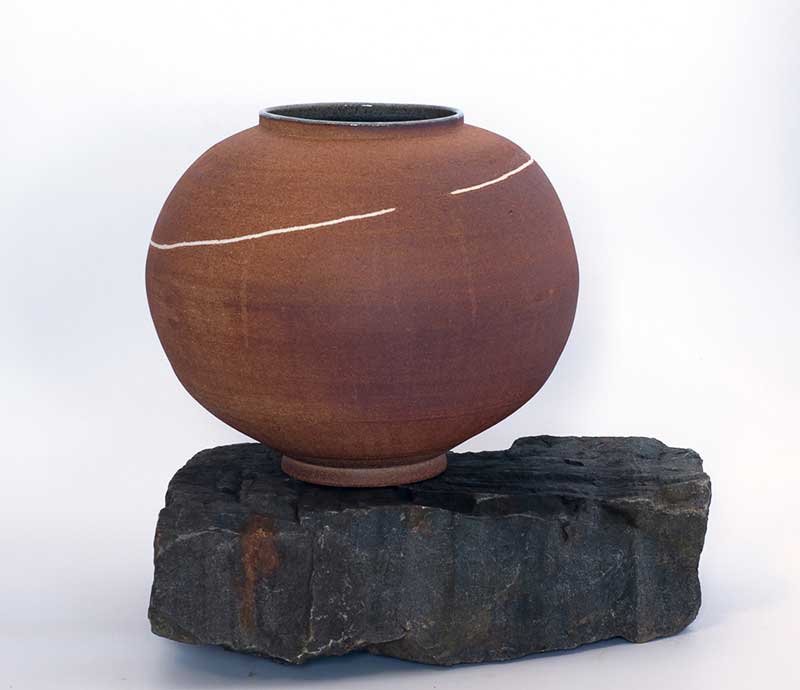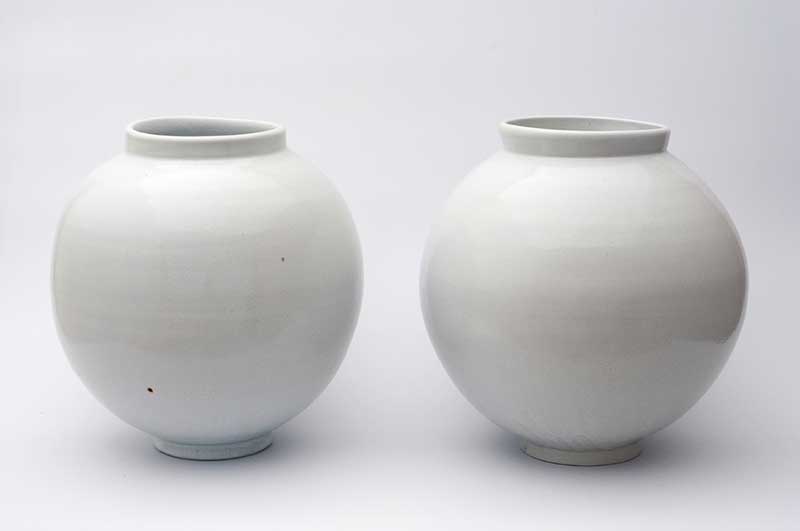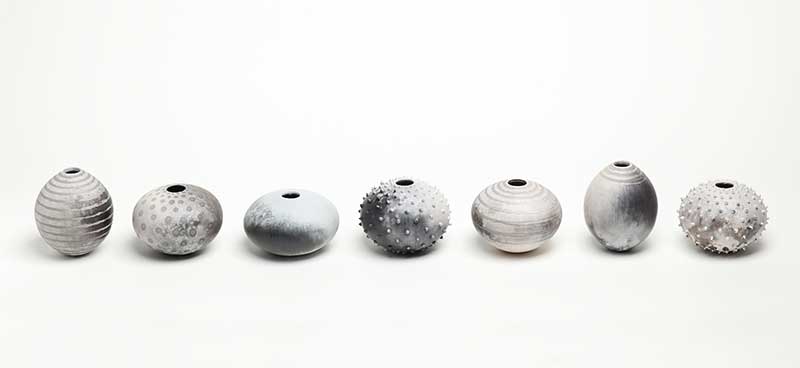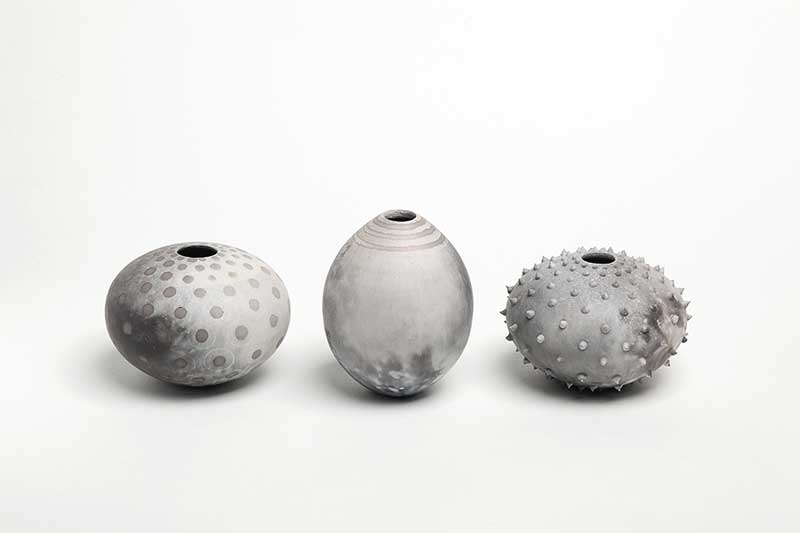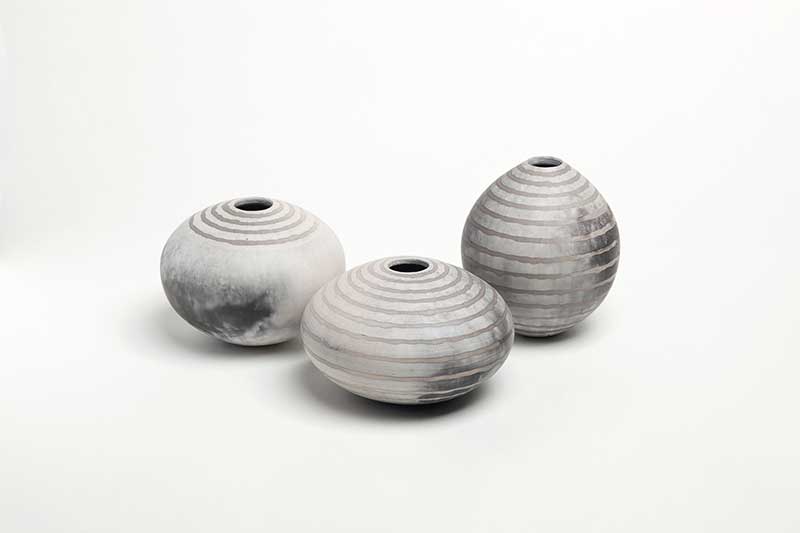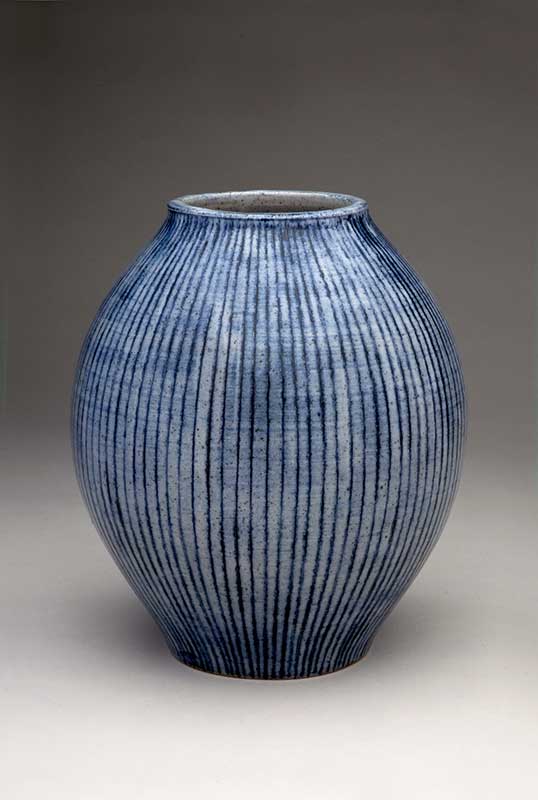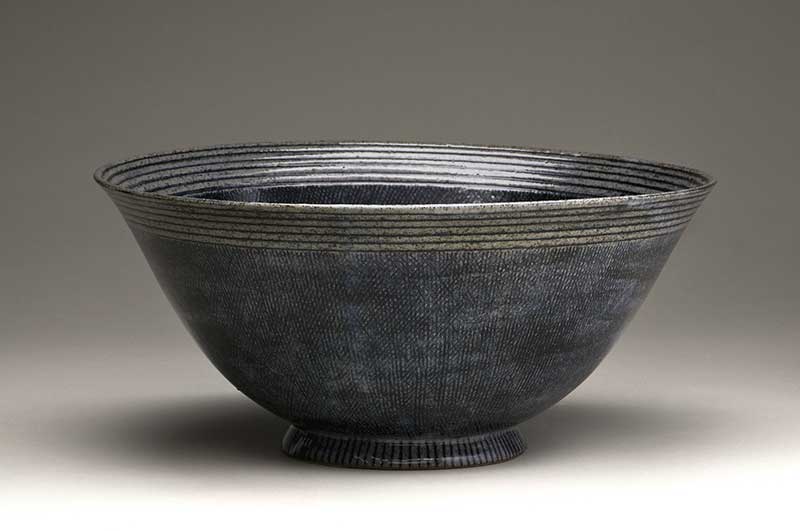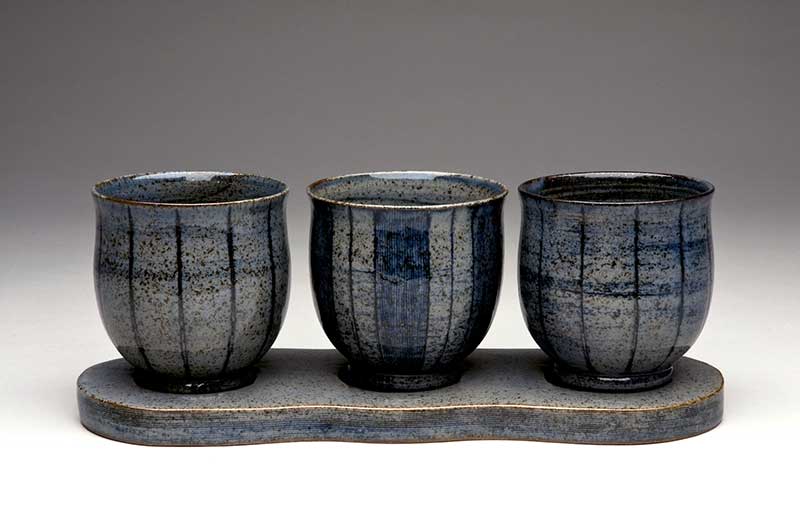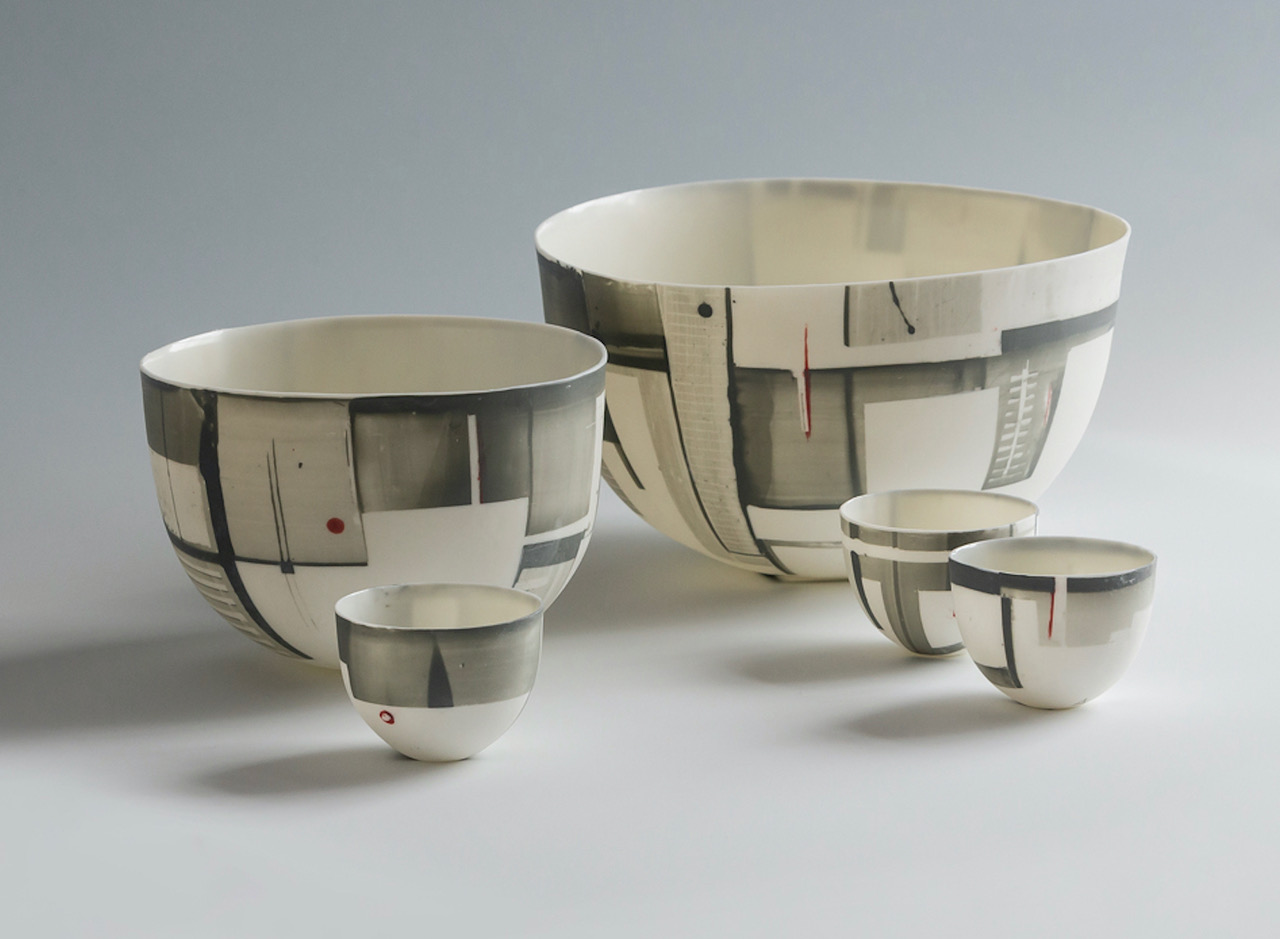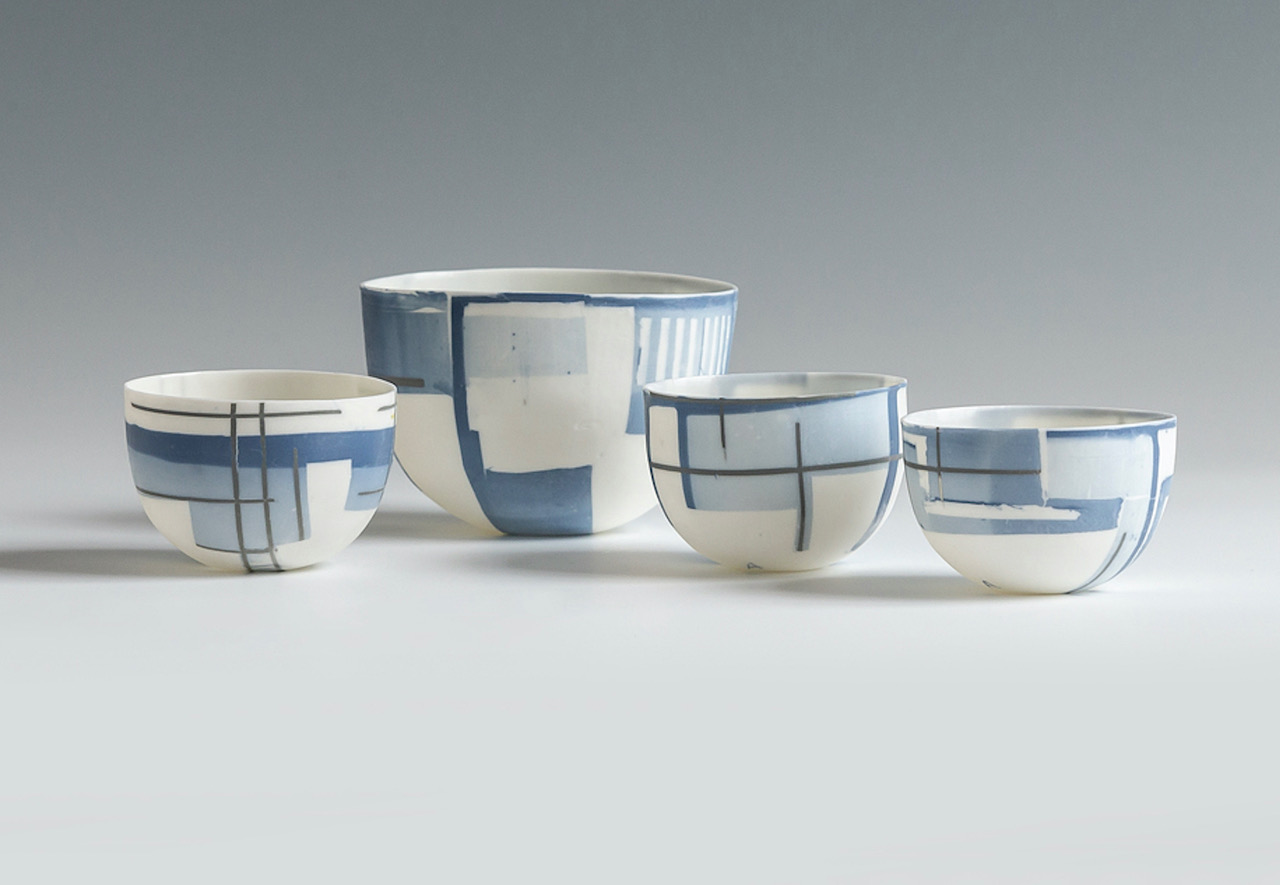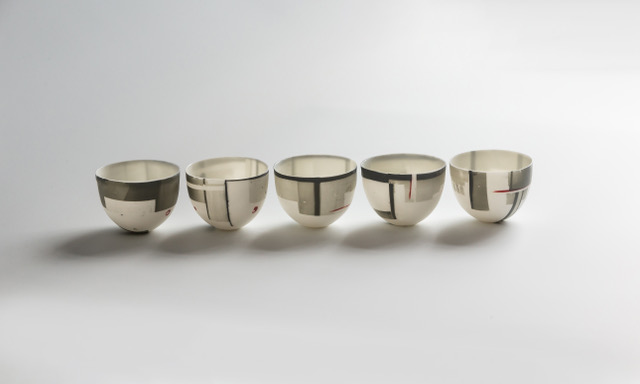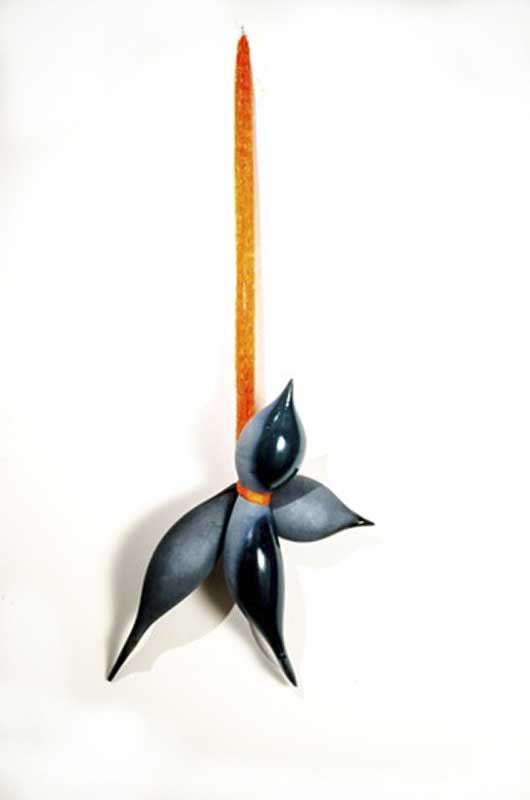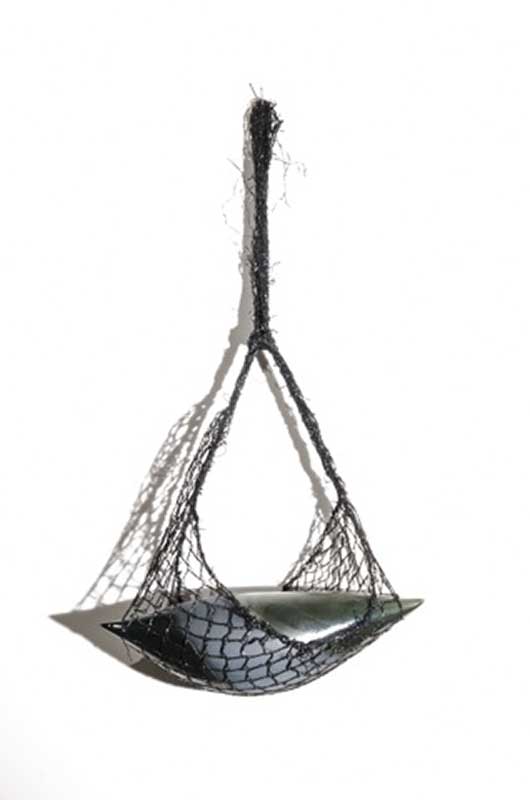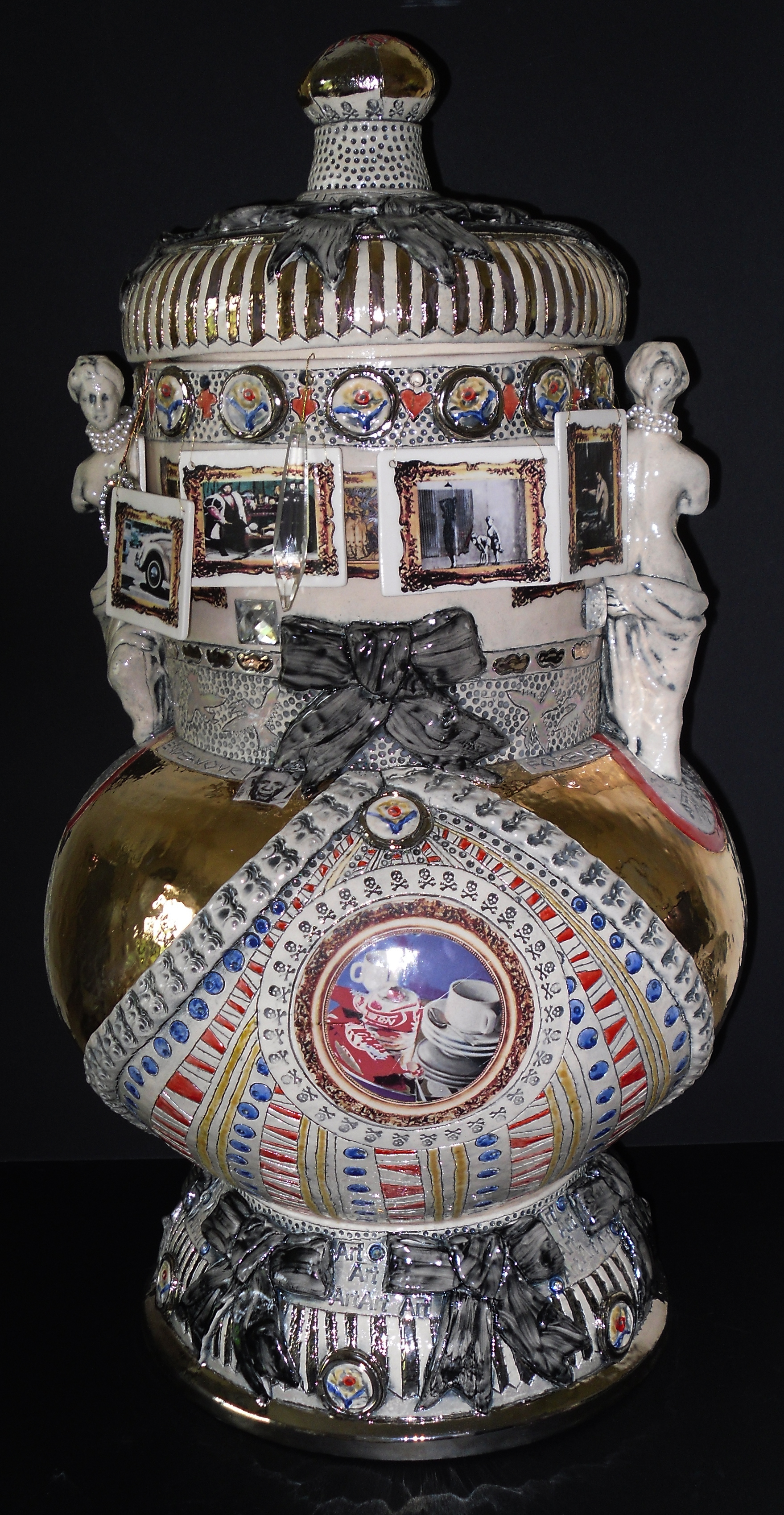CPA Members Profiles – B
For a complete list of Association members, please see our Member Listing web page.
Relocated to South West France after living and working in the UK for 37 years. Produces functional tableware and works with red earthenware, stoneware and Limoges porcelain. Runs residential, intensive throwing courses for beginners and intermediates. Visitors by appointment please. In summer the shop is open every Saturday from 10-4pm. Thrown stoneware pottery gas fired in reduction to Orton cone 9. Marina was born in Toulon in the South of France and spent part of her childhood in the rich coastal plains of Gabon, before moving to Alsace near the Vosges mountains and then to England.
I make a range of pots from very large pots for the garden to small beakers. All my work is stoneware, is thrown and often altered and then Salt Glazed to 1300C, in a downdraft, oil-fired kiln. I fell in love with clay while I was at Edinburgh College of Art studying for a degree in Jewellery design. It was the immediacy of clay, the smooth texture and its ability to move and react to your every touch that, in the end, resulted in my moving class and eventually finding a career as a potter.
I have been making sculptural and vessel based ceramics for over 40 years, exhibiting regularly both in UK and internationally. My work is represented in numerous public and private collections worldwide. Each day is a journey of looking and experiencing nature's change, of how mother nature presents herself to the world.
My luxurious tableware is intended to offer exciting and imaginative possibilities for presenting food, and to enhance the pleasure of sharing a meal.
I make thrown earthenware glazed functional pottery. My work is painted using brush and sponge techniques to create a variety of images from flowers to yachts in style a bit like watercolour painting.
For many years I have made sculptural work that has exploited the inherent properties of clay bodies, adapted through aggregate additions and polished post-firing.
My work explores the links between ceramics and geology and place, making pieces entirely from geological samples that I have collected from specific locations around the country, and that illustrate the ceramic qualities inherent in these materials. Peter Bodenham is a potter and visual artist. He runs St.Dogmaels Pottery near Cardigan, West Wales making thrown functional ceramics. Peter creates formal contrasting effects by selecting and gathering clays and glaze materials with the aim of making pots that are evocative of the land and seascape they are drawn from. Informing and framing his pots are a range of linked sources, a sense of place, vernacular design and socially engaged collaborative art projects. Motifs and gestural marks brushed on the surface of the pots can be seen as direct traces of his phenomenological experience of site and place, where he grew up and continue to live. At it since 45 (that's age not date). Still learning from the vicissitudes of possibility in form and tunnel of flame always imagining there remains something to have you look, question, look again, try again. Wood fired earthenware ranging from small domestic ware to large individual pieces.
Most of the work is wheel thrown but there are also hand built pots,pressed ware and tiles.
Daniel Boyle has lived and worked in Wales for the past 18 years since graduating in studio ceramics from Harrow College of Art, London in 1991. Katie makes sculptural vessels and forms, which have subtlety textured surfaces, a depth of colour and that retain a softness and tactile quality that invites interaction. The recent introduction of the ceramic plinths questions the perceived understanding of the vessel form and creates a strong conversation between objects.
Trained in graphics with a fine arts background. Makes hand built sculptural forms. The clay used is St Thomas’ body fixed to 1127 C. The pots are sometimes refired to achieve further depth of colour and texture. The linear decorative technique using coloured slips and underglaze colours is constantly evolving. My work is wheel thrown, hand built, and assembled using stoneware and porcelain clays. Once assembly is complete, still soft forms are decorated with slips and engobes, and may have wood ash and or shino glazes applied. Pieces are placed and fired to 1400°C in a wood fired anagama cross draft kiln for three to four days. Some pieces may have multiple firings until the desired qualities are achieved. I use a variety of techniques depending on what I am trying to achieve. These include throwing, Slab building, coiling, press-moulding and pinching. Sandy Brown is internationally known as an influential figure in European and world ceramics. Over 30 museums worldwide hold pieces of her work in their collections, including the Victoria and Albert Museum, London; World Ceramic Centre, Ichon, Korea; Winnipeg Art Gallery, Canada; Frankfurt Museum of Applied Arts, Germany etc. My work uses a single pure jar form as a canvas to map my observations from an ongoing study of my surroundings. I incorporate stone and locally dug clay into my work to create a narrative, one that conveys a unique sense of place. The unpredictable nature of each jar comes from the inclusions and their metamorphosis during firing. This individuality and tension between materials speaks of the human condition and how the landscape shapes us as individuals. The pots are thrown on the wheel using a grogged white stoneware. Then the pots are burnished and some are textured using a thick slip. They are then fired to 1000 degrees in an electric kiln. Once fired, pots are patterned using a thinner slip to create a resist pattern. All the pieces are reduction-fired stoneware, mostly thrown and then individually worked upon to bring out the particular qualities of each piece. I use a limited range of clays, slips and glazes - always working within a restricted palette of colour. Anne Butler trained in Ceramics in the University of Ulster and the University of Wales in Cardiff and now works from her
studio in Northern Ireland.
The Eclipse vessels are inspired by the light and shadows cast in the urban environment. Abstract marks of coloured porcelain are transferred onto thin sheets of porcelain, which are then cut, layered, assembled. The translucent quality of
porcelain evidences this making process and allows the shadows of layers to be seen. Many years in Asia has also
influenced the work. The Japanese aesthetics and sentiments regarding natural transience, distortion and fallibility of material and process is evident in the work. I am exploring change and evolution using ceramics as a medium for sculptural ideas. I often work on a series of intuitively developing and metamorphosing forms.
My work is mainly ceramic with found or made objects. Sylph Baier - Selected member
Chris Barnes - Selected member
Workshop at The Knott,
Ainstable,
Carlisle,
Cumbria
CA4 9RWMarina Bauguil - Selected member
Her immersion in different landscapes and cultures fostered a sense of curiosity towards the transience of existence, which continues to inform her creative practice.
She studied sculpture at Falmouth School of Art and later did a two-year City and Guilds in ceramics in Nottingham.
Marina’s love for clay as her medium of expression resides in the ancient connection between people and the Earth.
During her sculpture degree, she started investigating the role of art in human life by studying the primal
art of various cultures, being especially drawn to ritualistic and sacred objects. She creates mainly hand-built figurative pieces exploring creative traditions of Earth and Spirit and is particularly interested in the way objects impact our daily life, directly influence our surroundings, and affect our wellbeing and sense of self.
The core of her ceramic practice centres around the idea of capturing the unseen essence of nature, being and phenomena into physical form as well as the investigation of subconscious narratives.
She uses a variety of hand-building and sculpting techniques, such as coiling, pinching, carving, tearing and modelling, to make her pieces in porcelain and stoneware clays. Underglazes, oxides, slips, glazes and gold lustre are applied through a variety of decorative processes to bisque and sometimes greenware. The work is then fired in an oxidation atmosphere to 1235°C.Svend Bayer - Honorary Fellow
I use a locally mined stoneware clay and fire with wood.I am interested in the way that very ordinary glazes are transformed by ash and embers in very long wood firings.Deborah Baynes - Selected member
My workshop is at my home in Shotley, which is on the East Coast a few miles from Ipswich. Helen Beard - Selected member
After college, I continued my training under the supervision of Edmund de Waal. He taught me to throw on the potter's wheel and introduced me to porcelain. I'm still using the same clay today.
I now work from my busy Clerkenwell studio where I make, draw, design and sometimes teach. I love the local area and find it inspires much of my work here. There are all sorts of characters who crop up again and again on my pots, from swimmers at Ironmonger Row baths to market traders at Smithfield market.
I like to come up with new ideas for each of my shows, varying the themes around different places that have struck a chord in me. By grouping my pots together, I like to tell a story - creating whimsical scenes that capture the insignificant yet precious moments that make up our daily lives.
My bespoke ceramics, which are each individually thrown on the wheel and hand painted, are made for exhibitions and commissions. I often collaborate with private clients, luxury retailers, galleries and museums; for example recent commissions include designing and making a bespoke range of porcelain for Fortnum and Mason and The National Gallery.Peter Beard - CPA Fellow
I work in an intuitive way, constantly sketching and experimenting with new forms and processes. My forms are strong and simple but have complex surfaces. Each piece works as a whole, combining form and pattern.
My work usually uses techniques of layering glaze and painting patterns with wax between the layers of glaze, the wax acting as a resist for subsequent layers. This meticulous process creates complex patterns and textures within the glazes. The work is fired to stoneware temperatures.
Alongside my wax resist work I am making “ground” pieces on which many layers of coloured clay and glaze are built up and then ground back to reveal colour and patterns within the structure. Work is stoneware and porcelain fired, usually, to 1280°C.
Alongside my ceramic practice, I also work in cast bronze.
I continue to push the boundaries of my skills, and am not afraid to take risks, to produce timeless, beautiful objects which people will enjoy having in their homes and workplaces.
Bev Bell-Hughes - CPA Fellow
Marks left in the sand by the receding tide, sharp and clear, to deep gullies or smooth. Items thrown up by the tide battered by storms.
Different seaweed flowing in ribbons. The erosion of surfaces be they shells, driftwood or bone.
I work directly into the clay, an intuitive process of making, and pinching of clay. I do not set out to copy nature, but aspire to echo the process of nature.
My work is in collections at home and abroad. Reduced fired stoneware.Kochevet Bendavid - CPA Fellow
I mix small amounts of paper-fibre with Limoges Porcelain and manipulate the clay while it’s very wet, combining throwing and slab-building to create soft, flowing forms. The silky white glaze and golden rim provide an effective background for food presentation.
Rob Bibby - Selected member
I work in a converted Methodist chapel in East Northants not far from Peterborough.David Binns - CPA Fellow
More recently however, I have felt a need to re-connected with the fundamentals of ceramics; enjoying a more direct and intimate contact with the clay, and for the first time in my ceramic career, exploring both the vessel and glaze.
My work draws inspiration from a number of contrasting influences including contemporary architecture and the natural landscape. Shaped by a deep respect of the fundamental principles of Japanese aesthetics, I hope my work has boldness and visual richness, whilst simultaneously conveying feelings of simplicity, solitude and quietness.
I have participated in numerous UK and international exhibitions, workshops and symposium and my work is featured in many international collections and publications.
Professor of Contemporary Ceramics at the University of Central Lancashire.
Member of the UNESCO International Academy of Ceramics.Matthew Blakely - CPA Fellow
There is an extremely varied geology in the UK with a spectacular range of rocks and minerals ranging from recent river deposits to some of the oldest rocks on the planet. Many of these have been quarried at some stage during the human occupation of the country, though mostly for processes other than ceramics, such as building or making roads.
The pieces that I make illustrate another way of looking at these materials and the colours and textures that they are capable of producing in the kiln: inspiration coming from the materials themselves, the qualities that they develop in firings and the places that I have collected them from.
I am working with a wide range of different rocks and clays, using firing types and temperatures that bring out the best in them. Increasingly my approach becomes simpler and simpler, taking ceramics back to its essence. I use these materials as unrefined as possible: rocks are crushed by hand, milled and blended to create the glazes, clays are often used as dug straight from the ground.
All of the work here has been fired in my wood kilns using waste wood that has grown where I live in Cambridgeshire.Peter Bodenham - Selected member
Charles Bound - Honorary fellow
Clive Bowen - Honorary Fellow
The work is once-fired to 1060.Daniel Boyle - Selected member
He makes one-off functional salt glazed stoneware works, to hold and interact with – things to be used and enjoyed.
Every part of the making process contributes to the work produced, the throwing and turning marks, the impressed patterns and the fluid textured glazes.
He fires using wood and gas-fired salt kilns to 1300° with all their variations and challenges.
The slips and ashes used highlight where the flame has touched the pots causing running and movement - producing glazes reflecting landscapes and creating a glaze to be explored beyond their surface. Katie Braida - Selected Member
What excites me is working with the material, creating forms. This leads to the exploration of the surface. I create texture and pattern based on the rhythms and patterns within the environment and then develop colour by layering a range of materials. I regularly swim in the North Sea and this has proved to be a significant source of inspiration. Sometimes the water can be dark, the surface reflective like oil, making you question what lies below. This is implied in the dark interiors of the forms, where the interiors appear to almost distort the interior
volume, suggestions of the unknown are glimpsed in the shadows.
However, it is important that the work remains open to interpretation. The textures remain abstract enough for the viewer to bring their own experience to the work. The use of terra sigillata slips creates a soft, satin surface, which is reminiscent of the quality of the clay surface before the bisque firing. By interacting with the forms you get to know the subtleties of each individual piece. Touch is such an important part of the making process and it feels like an essential part of the process of experiencing the work.Loretta Braganza - CPA Fellow
Strong abstract shapes are linked by deceptively simple surface patterning. My aim is to balance process, material and idea creating individual pieces that together form sculptural groups. They start with a series of related shapes each animating the other creating a balanced tension within the group.
In the series ‘Turning Stones’, forms can be positioned in different ways so changing their dynamics and viewer experience. They reflect the teetering granite boulders in Hampi, South India.
The popularly named ‘Twelve Apostles’ were inspired by the giant sea stacks along the Great Ocean Road, Australia – which are still evolving, eroded by the elements. On each piece I am attempting to capture in a single dynamic moment the interaction of sea, foam, spray, strata & wind.
‘Shimmer’ is apparent alchemy – clay burnished to metal. The process of mark making imitates the quick, rhythmic strokes of metal work. Some surfaces have the hard glint of polished metal while others are softened by time worn dents & scratches.
Work is held in public, corporate and private collections in Britain and abroad.
CPA Fellow.
Benedict Brierley - Selected member
My workshop is situated within Loughborough University School of the Arts.
Work may be viewed by appointment.David Brown - Selected member
I also use many methods of achieving textural surfaces.
My work is fired in an electric kiln to 1250 degrees. (oxidised stoneware)
Sandy Brown - CPA Fellow
She has been the subject of two major Arts-Council funded solo touring shows; and has had numerous shows in USA, Japan, Holland, Germany, South Africa and Australia. She has been invited as a guest presenter at ceramic art Conferences in USA, UK, China and Australia, and to do residencies in China, Denmark, Germany and Australia.Adam Buick - Selected member
The Materials used in my work are integral to the meaning of each piece. I intensionally source my own local materials using them unrefined to show my relationship with the landscape. I add clays and stones to the main body before I throw, this gives a random and spontaneous feel to my work. I like to experiment with new sources constantly at different stages of the ceramic process. Combining different clays, adding stone to glazes or laying seaweed onto the surface of a pot as its fired.
All my work is hand thrown and the large pieces are made in two sections or more. I have a wood fired kiln and all the work is fired to stoneware temperatures. I mix and create my own glazes, my particular interest is in the opacity of Jun glazes. Vanessa Bullick - Selected member
The pots are fired in a bin of sawdust using different woods including pine, oak and sycamore to vary effects. Stripped and spotted pots now have the slip removed to reveal the pattern.
Workshop is located in Cellardyke, Fife.
Karen Bunting - Honorary Fellow
The reduction firing brings about a cohesion of surface and body through the particular chemical interactions which take place in the kiln with this firing technique.
I want the form and the decoration to be intimately related and for there to be no spatial illusion created by the decoration. The reduction firing produces muted colours, which are often marked out with darker lines of patterning.
When I decorate I am mapping out the surface of the pot drawing attention to aspects of the shape of the skin which contains the volume within.
Working in Hackney,London.Anne Butler - Selected Member
Ian Byers - CPA Fellow
Process
My forms are made using a number of processes: modelling, casting, carving, then finally slip casting or press moulding. The work is normally fired to 1160°CJan Byrne - Selected member
It has many layers of decoration. The pieces are becoming increasingly fine art in nature and represent my thoughts, feelings or ideas, which often mirror events, personal to me or are part of our collective experience


